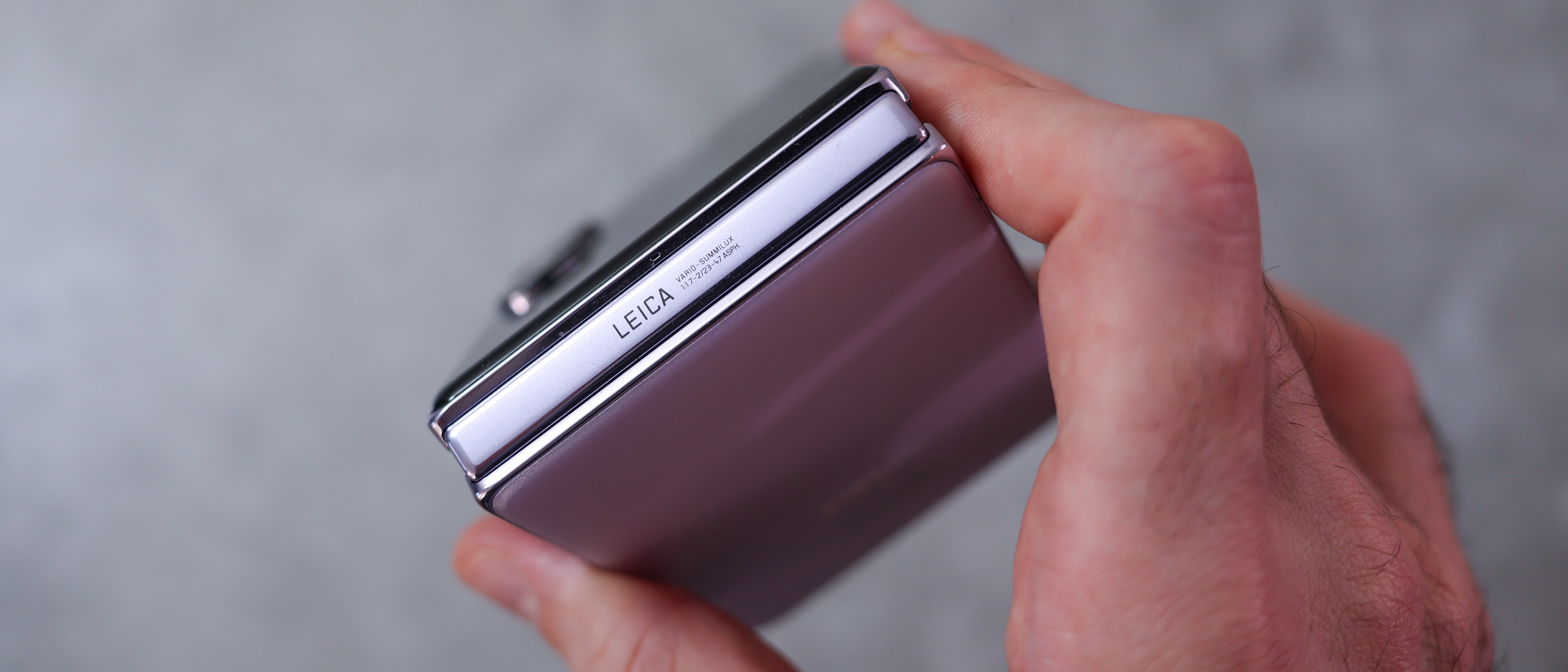Digital Camera World Verdict
The Xiaomi Mix Flip has impressive battery life, a good camera system, a sleek design and is one of the most powerful foldables around, but a lack of wireless charging, IPX8 water resistance rating and an ultra-wide camera hold it back. While this is one of Xiaomi and Leica's weakest camera partnerships to date, set alongside the flip phone competition, the Mix Flip is both competitive and compelling for anyone comfortable with its limitations.
Pros
- +
Powerful for a flip phone
- +
Fast wired charging
- +
Looks and feels impressive
- +
Supports telemacro photography
Cons
- -
No IP-rated water resistance
- -
Misses out on wireless charging
- -
Highlights have a tendency to blow out
- -
Limited cover screen app support
Why you can trust Digital Camera World
The Mix Flip marks the brand’s first foray into the clamshell flip format, bringing some distinct advantages to the table over the Galaxy Z Flip 6 and Motorola RAZR 50 Ultra. Meanwhile, budget options like the Nubia Flip 5G are also making waves, driving down the price and barrier to entry to flip phones and foldables at large.
While Xiaomi's coming out of the gate swinging with its Mix Flip, it still falls short in some key areas on paper. There's no wireless charging or IP-rated water resistance, two features both Moto and Samsung flip phones offer. Xiaomi also ditches the ultra-wide camera in favor of a telephoto camera, and the cover screen's tall format supports fewer apps than the competition.
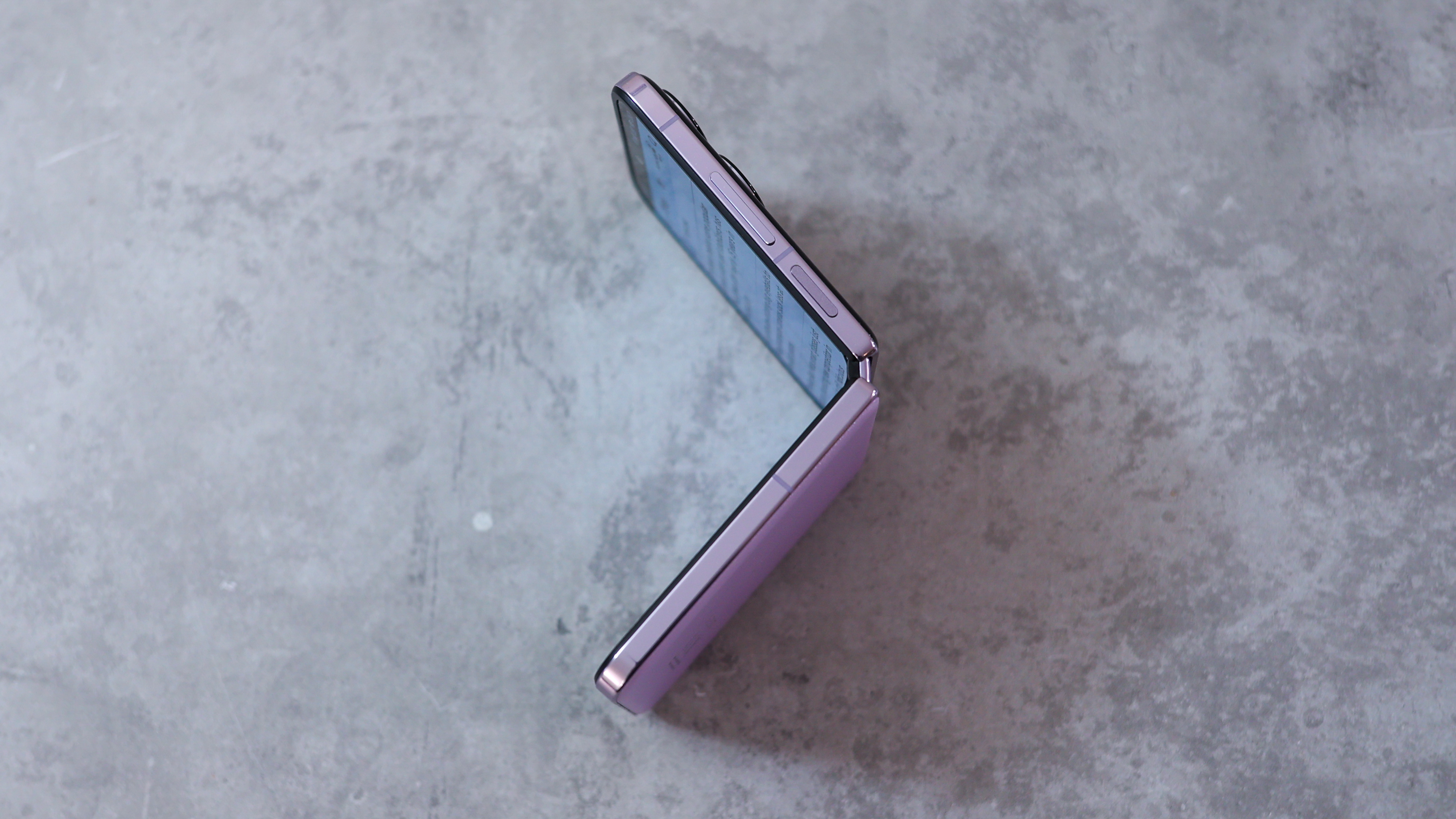
Since the first flip phone dropped, though, we've been craving a quality option with reliable cameras, with Oppo's Asia-only Find N3 Flip being the nearest we've gotten so far. So can Xiaomi finally deliver an excellent flip camera phone?
Xiaomi Mix Flip: design
There's an argument to be made – if you've seen one flip phone, you've seen them all – and that's partly true. Predictably, the Xiaomi Mix Flip closes up into a compact clamshell, has a cover screen on the front along with the cameras, and unfolds into a full-sized smartphone.
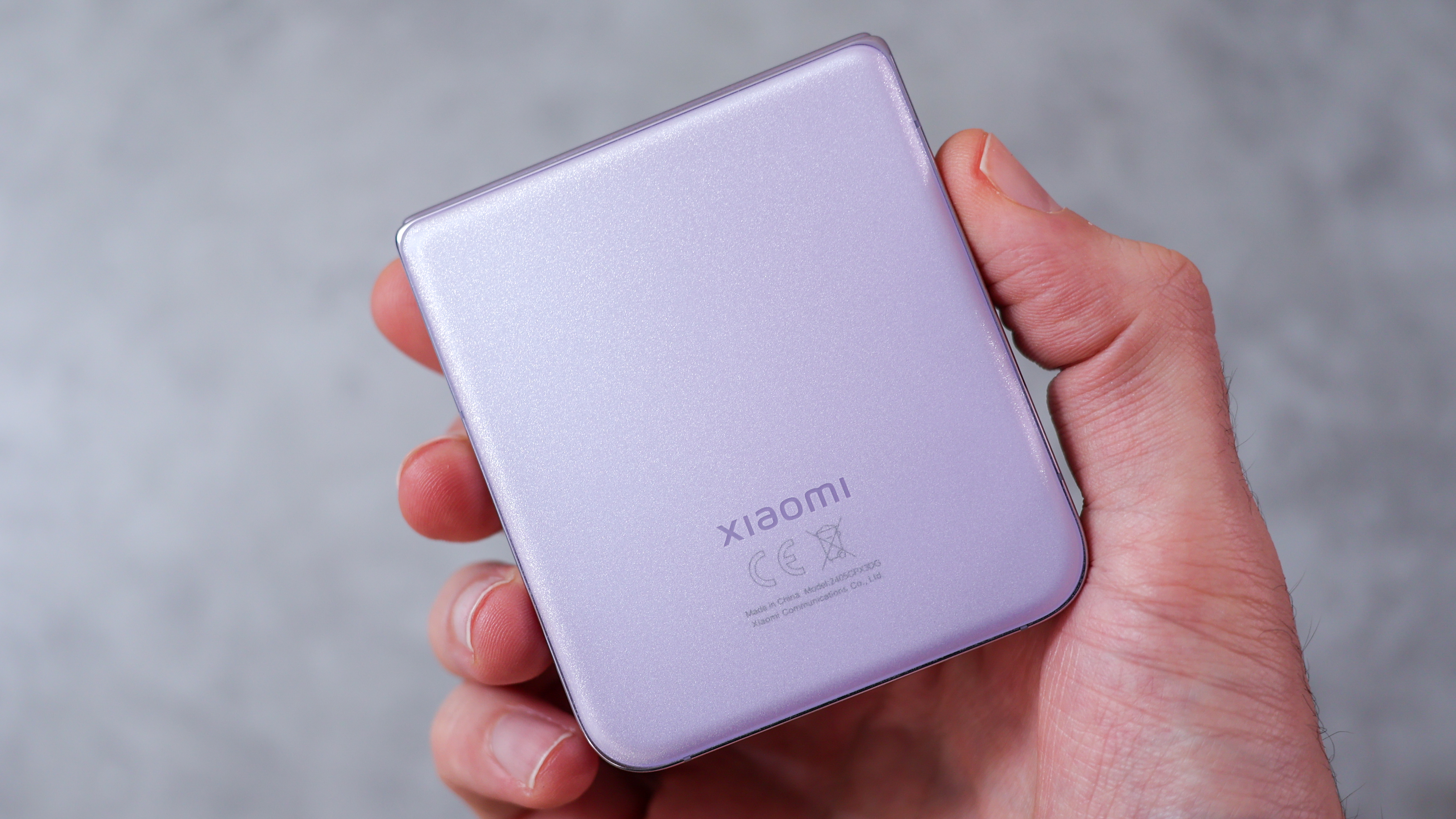
In-hand, the Mix Flip feels a bit chunkier than Samsung and Moto's foldables. It's a bit thicker, and a few grams heavier, likely owing to its bigger battery, and its flat sides matched with a curved, pillowy glass back with rounded corners means it sits comfortably in the palm.
Available in black and a lavender purple, the matte glass back does a great job of looking fingerprint-free, though the polished metal sides, cover screen, and main display both smudge when handling the phone, so it will need a wipe every now and then.
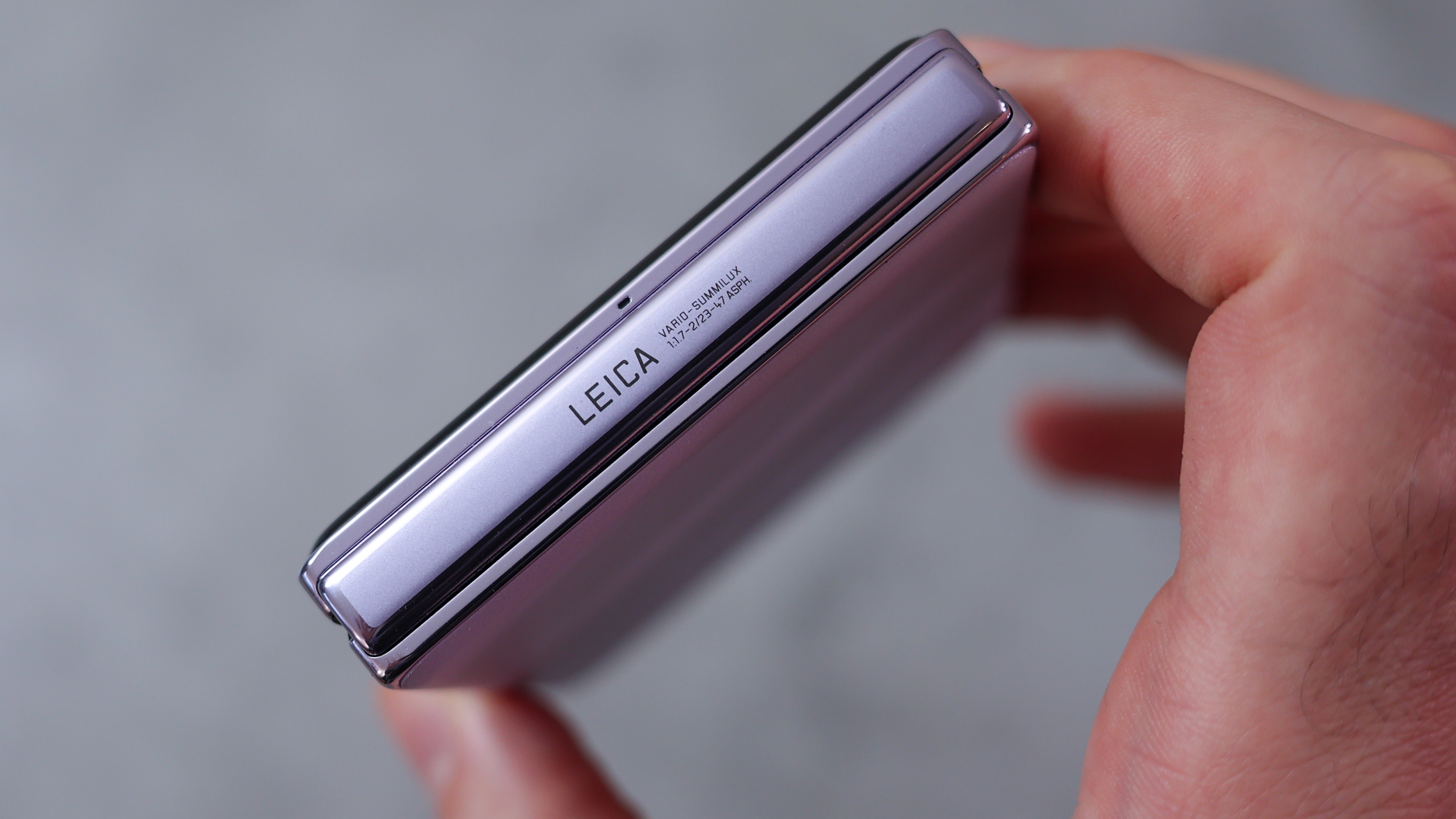
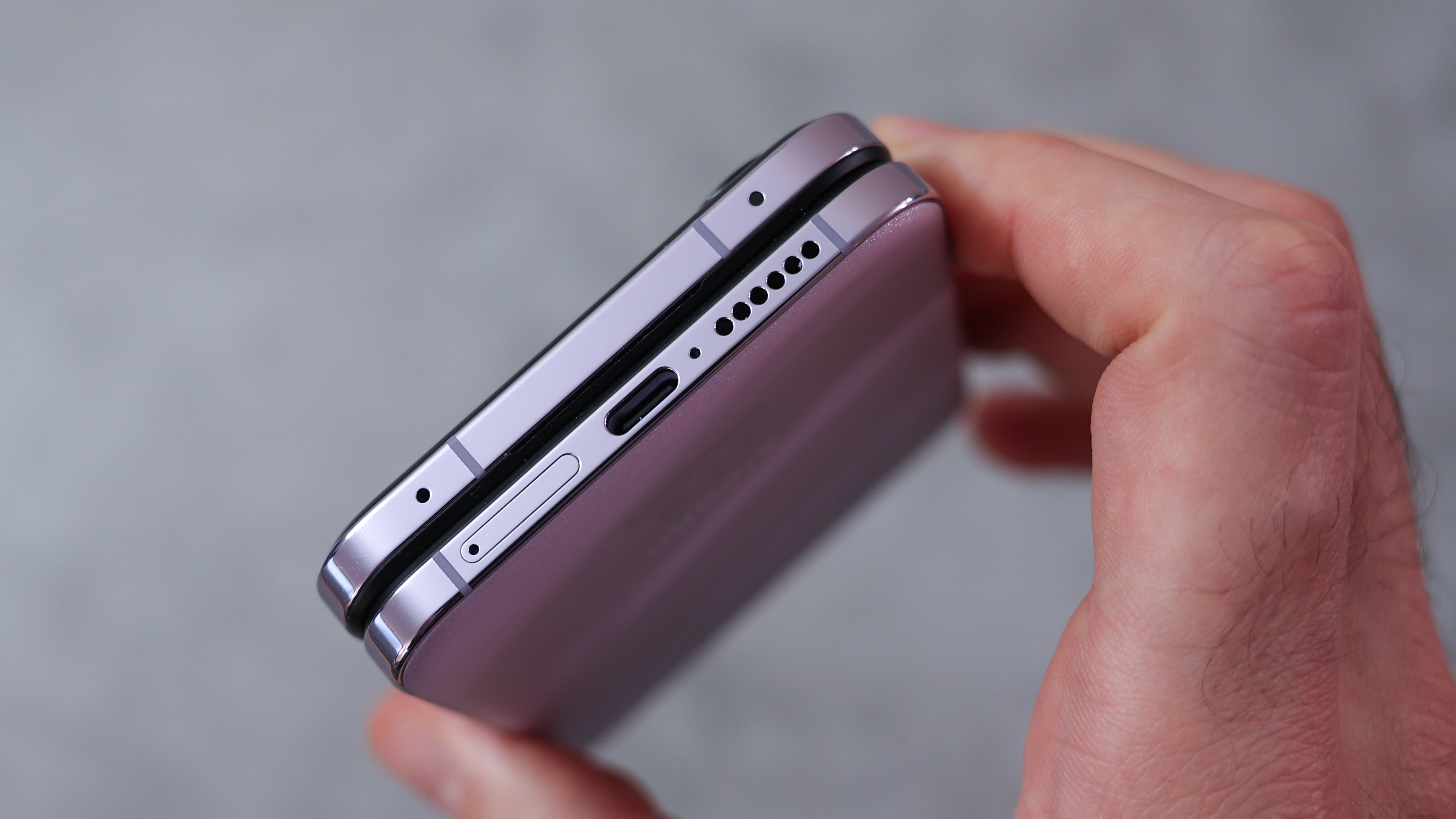
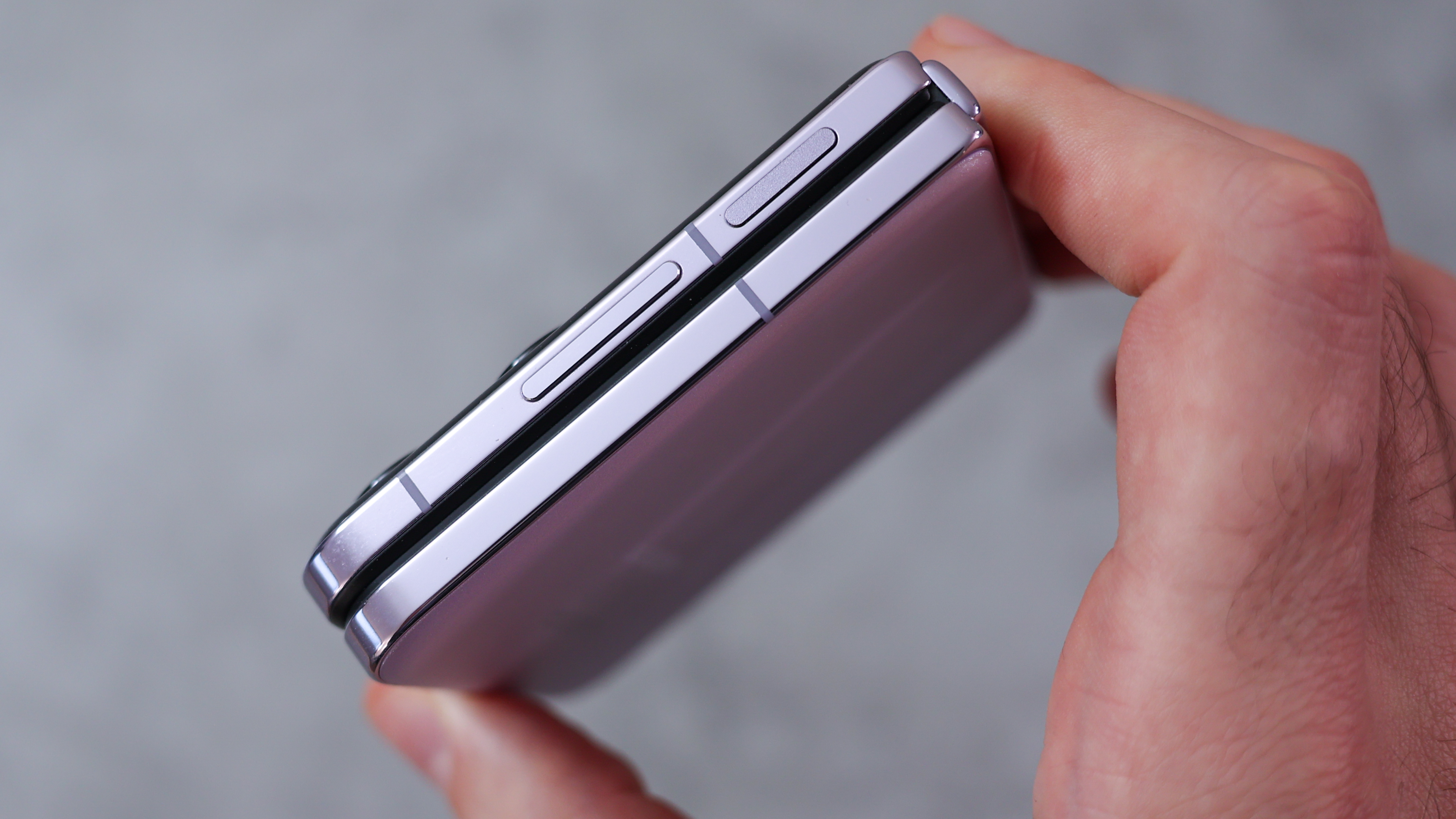

At the base is a USB-C port, all the buttons are on the right side, and the power button doubles up as a fingerprint scanner. This makes it easy to securely unlock the phone whether it's open or closed.
While the Mix Flip's chunkier styling may turn some off, it makes holding the phone for gaming and watching a very comfortable experience.
The phone's hinge feels more wobbly than that of the Z Flip 6, though the inner display has a much less visible crease, delivering a similar overall experience to the Razr 50 Ultra. It holds its position on a stationary surface between around 45-130º, delivering a smooth motion, along with a satisfying snap when it shuts.
Xiaomi Mix Flip: Screens
On the front of the Xiaomi Mix Flip is a 4.01-inch OLED cover screen with a resolution of 1392 x 1208 pixels and a 120Hz refresh rate. This makes it much larger, smoother, and sharper than the Galaxy Z Flip 6's cover screen, and without a big bezel, it also looks more futuristic.
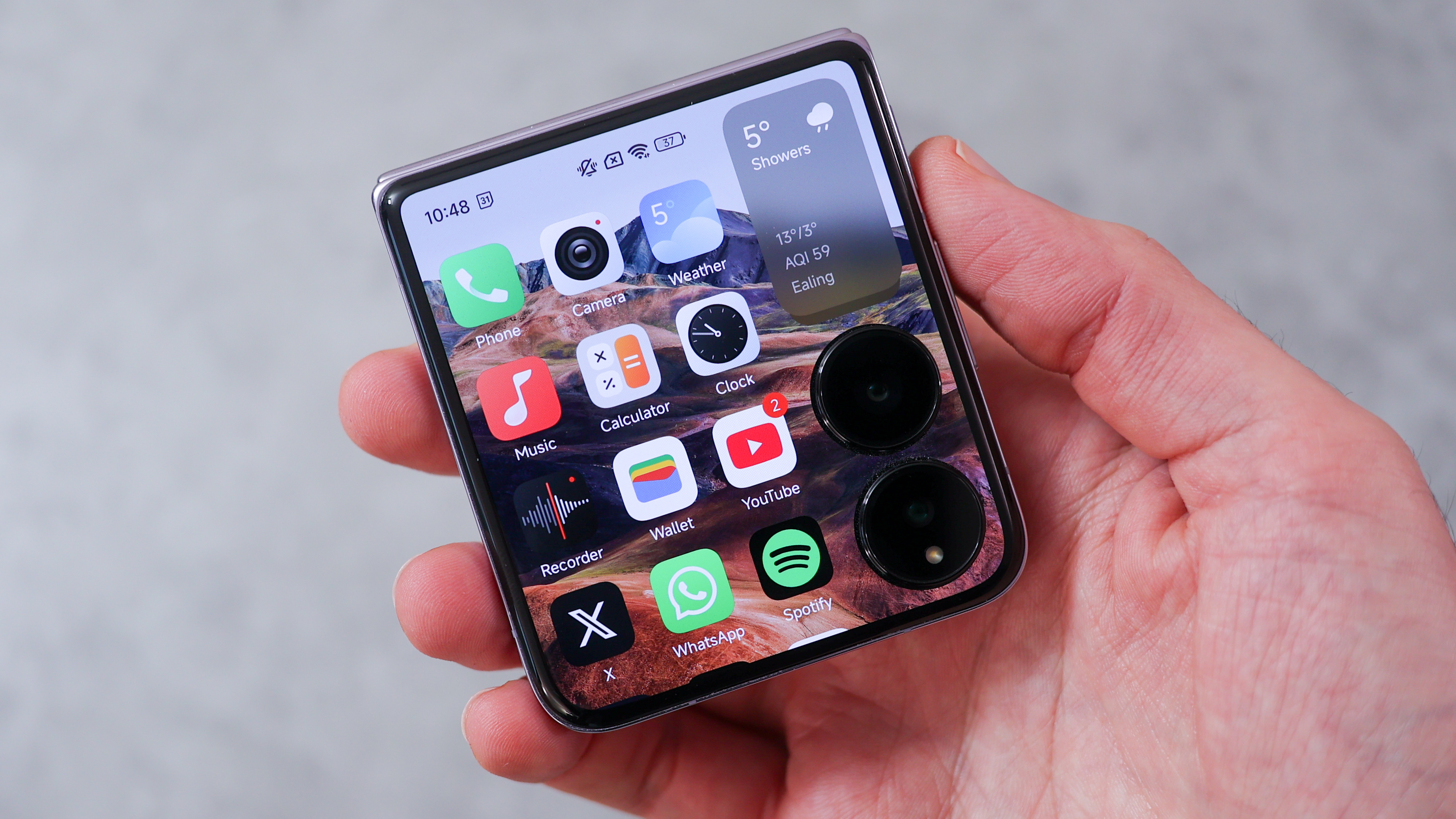
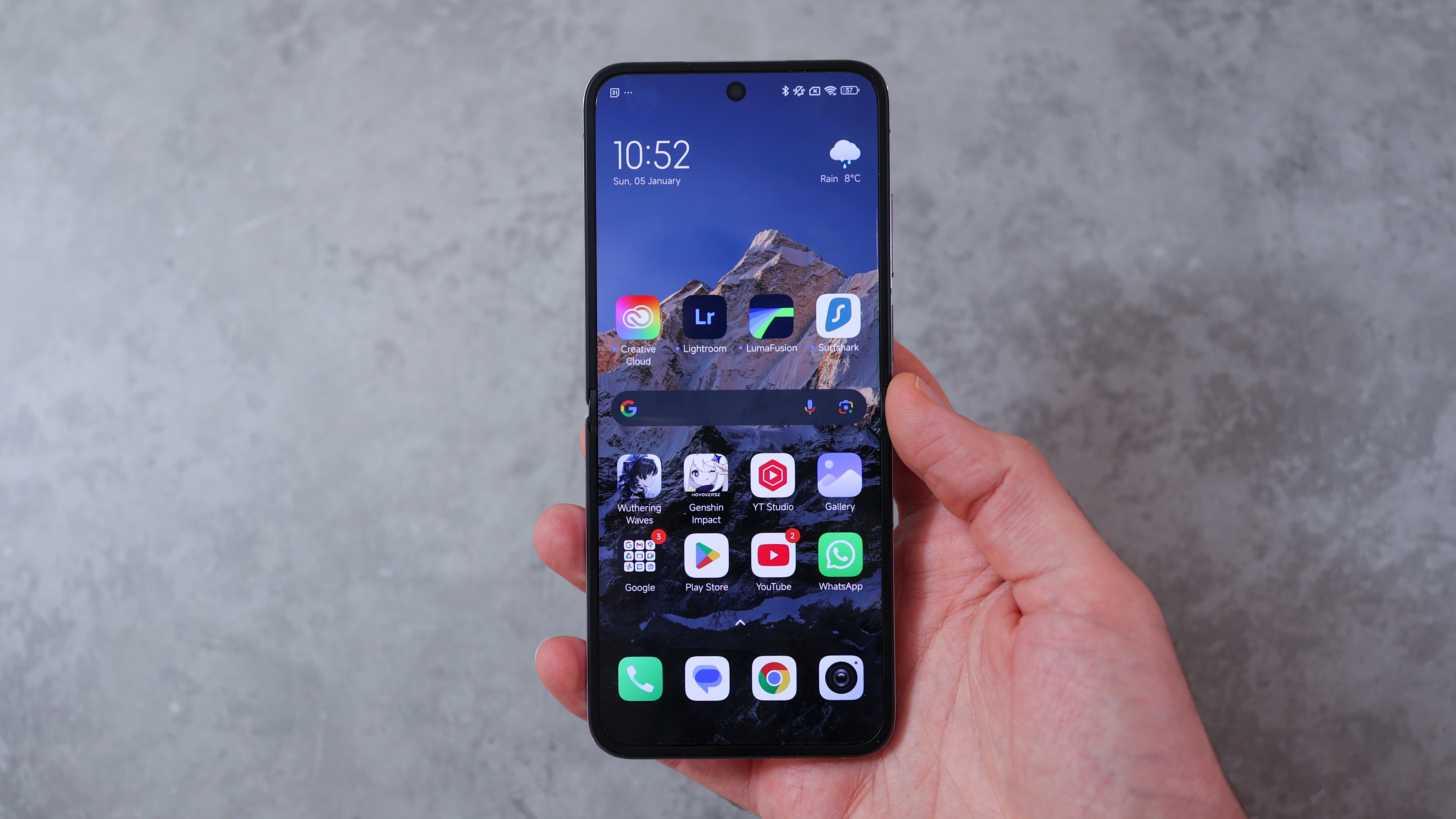
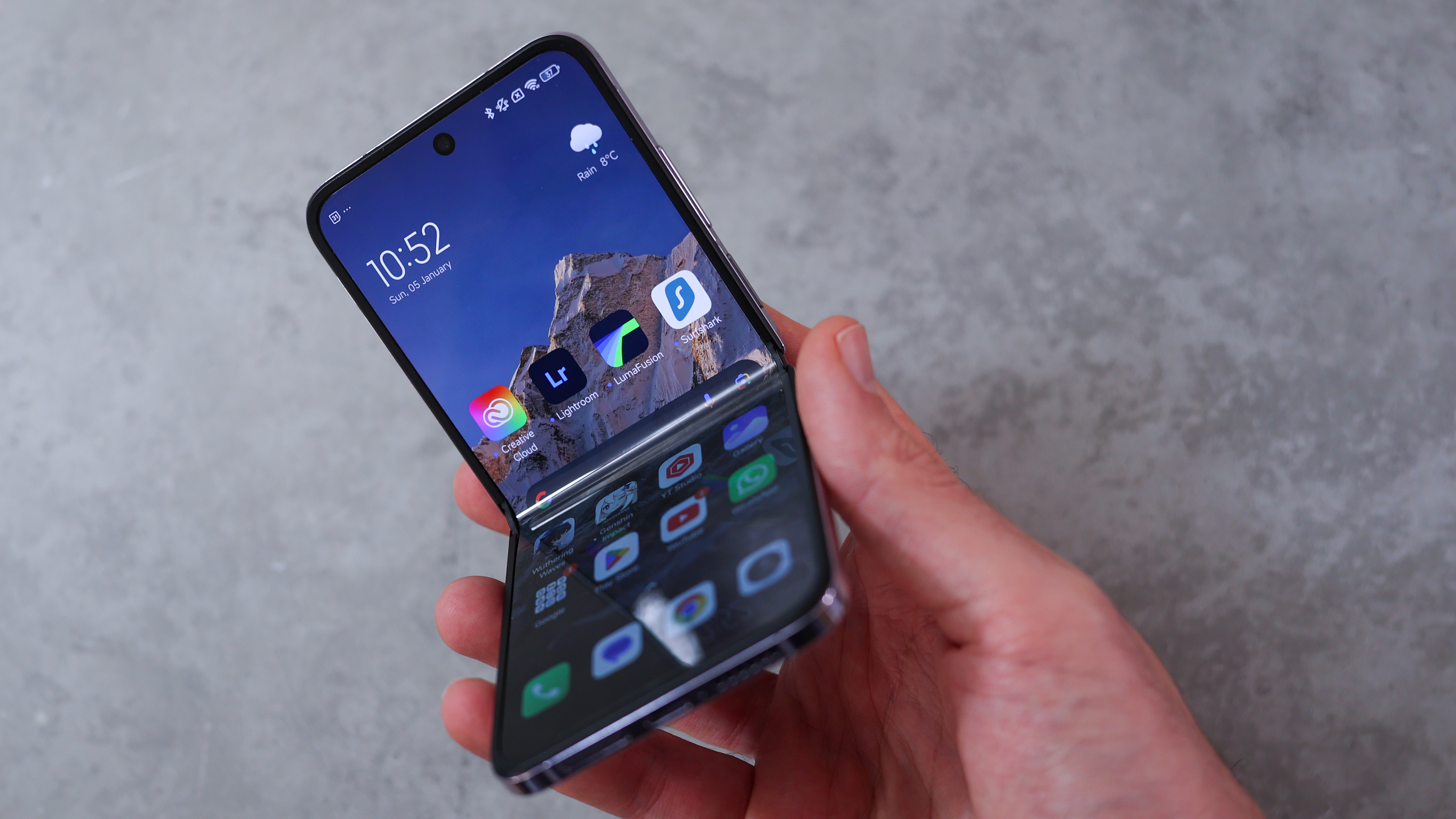
Bright enough for comfortable outdoor use and large enough for comfortable swiping, the cover screen is a highlight. However, it isn't quite as versatile as Moto and Samsung's alternatives.
By nesting two big camera modules into the right side, Xiaomi makes two mini interfaces in the cover screen. Above the cameras are sticky widgets – a clock, calendar, weather, for example – and on the left side is a tall space for apps to display in. This offsets the app experience making it slightly awkward when interacting with apps.
The Mix Flip also supports fewer cover screen apps than the competition, so compared to the RAZR 50 Ultra in particular, this makes it less powerful. Spotify, WhatsApp, Maps and many popular apps will run well on it, but if you plan on using more obscure ones, it's unlikely they'll be supported.
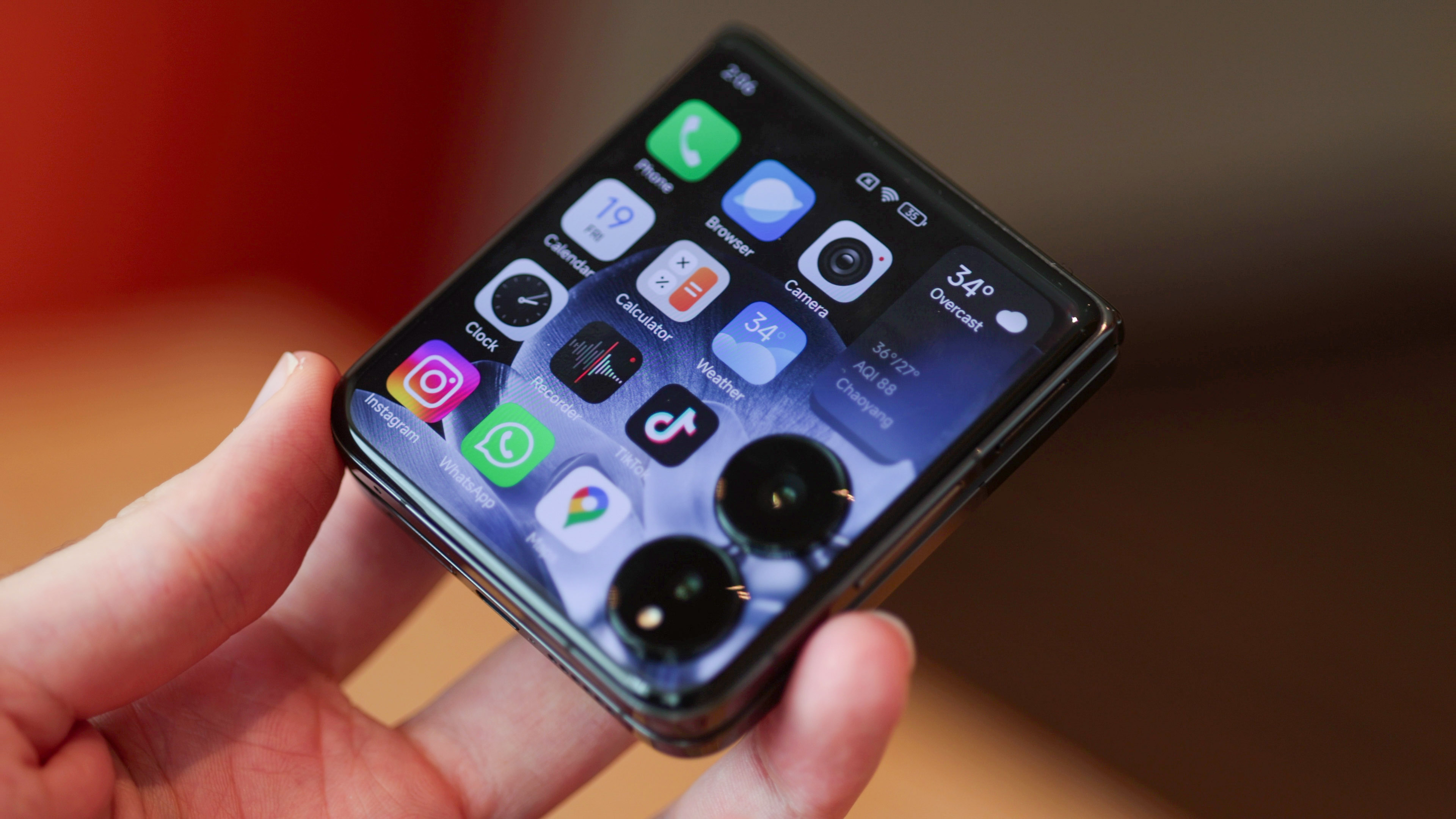
Unfold the Mix Flip's main display to reveal a 6.86-inch AMOLED foldable screen with a 1224 x 2912 resolution and a 1-120Hz adaptive refresh rate. The crease in the middle of the unfolded display is noticeable, but is less pronounced than the Galaxy Z Flip 6, and the display quality is generally excellent. It's also good to see Netflix HDR certification supported, and playback at up to Full HD resolution.
We also enjoyed the quality from the Mix Flip's speakers, whether watching content or playing back a game. The positioning of the speakers also makes it difficult to muffle them.
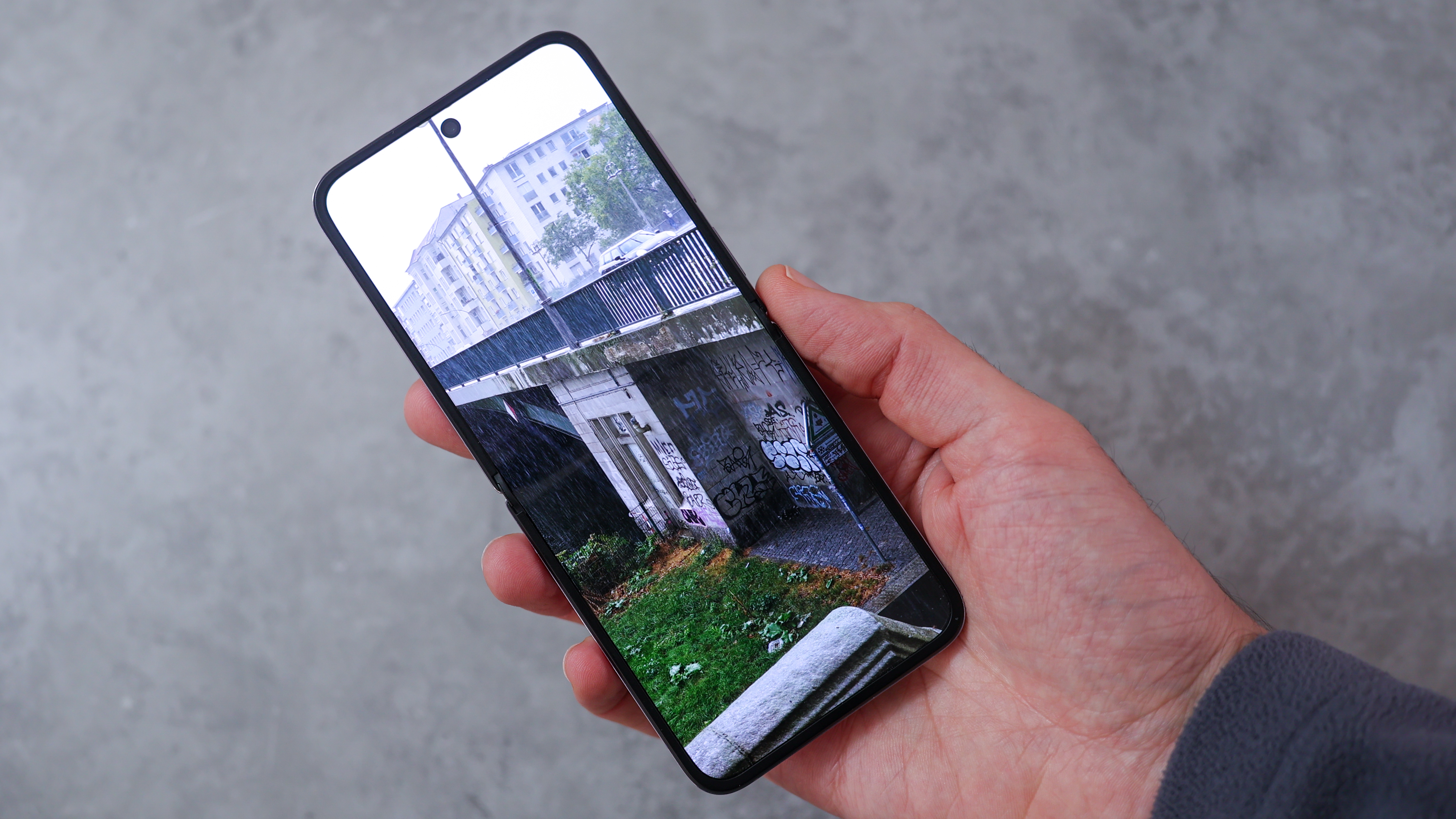
Xiaomi Mix Flip: Camera specs
One of the most exciting aspects of the Xiaomi Mix Flip is that it's the first Leica-branded flip phone to date. While we hoped it would have standout camera hardware, based on specs alone, that doesn't appear to be the case, though it is competitive for a flip phone.
The primary camera is a Light Fusion 800 image sensor from OmniVision with a 50MP resolution and a large-ish 1/1.55-inch size. Matched with an f/1.7 aperture lens and a 23mm equivalent focal length plus OIS, it's a similar spec to the main camera of the Z Flip 6.
While Samsung opts for an ultra-wide camera, Xiaomi puts a 50MP 2x telephoto camera alongside the primary camera. This 50MP sensor is matched with an f/2 lens and has a 47mm equivalent focal length. While it misses out on OIS, it does support a 9cm nearest focus distance for telemacro-style photography.
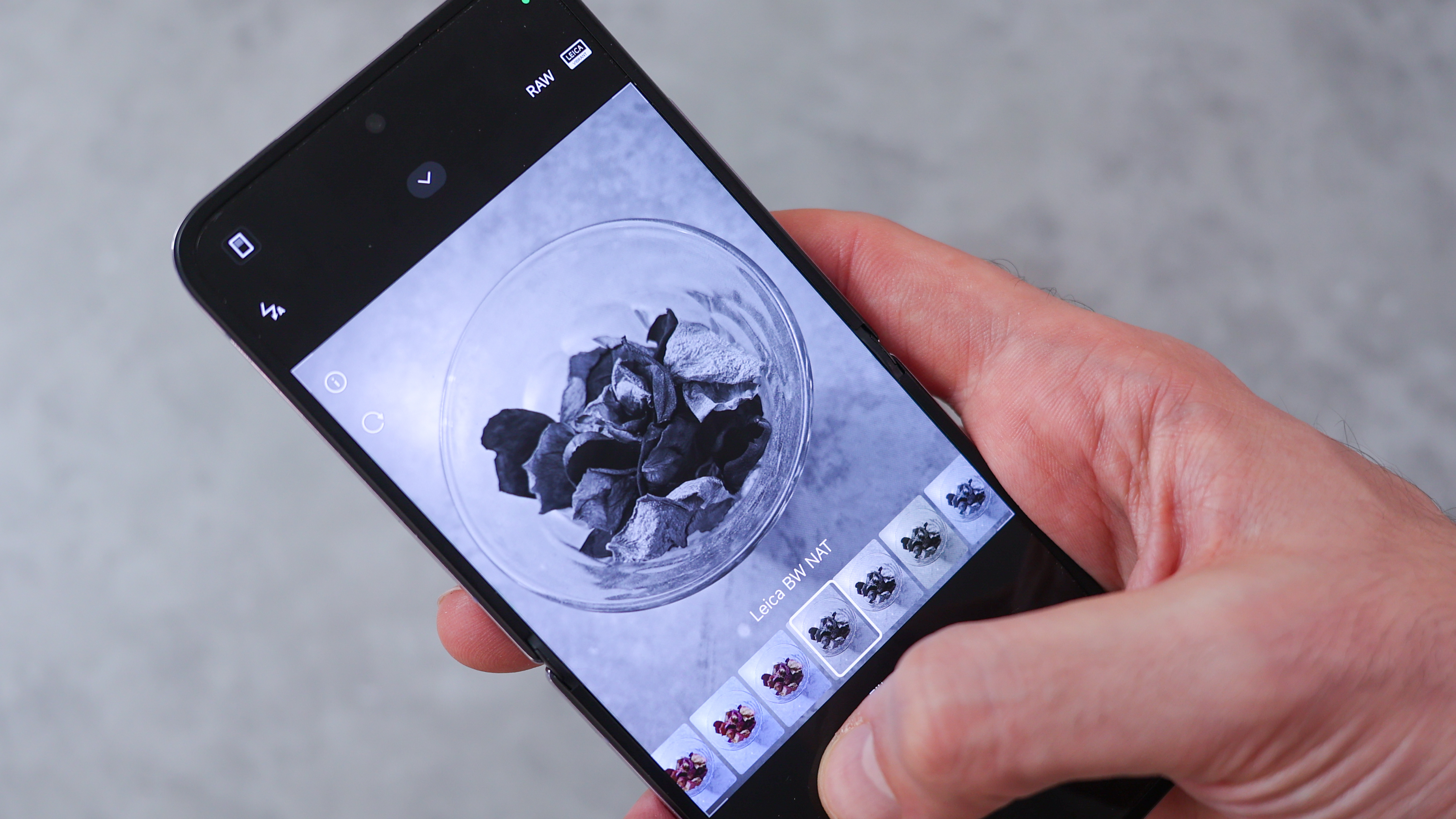
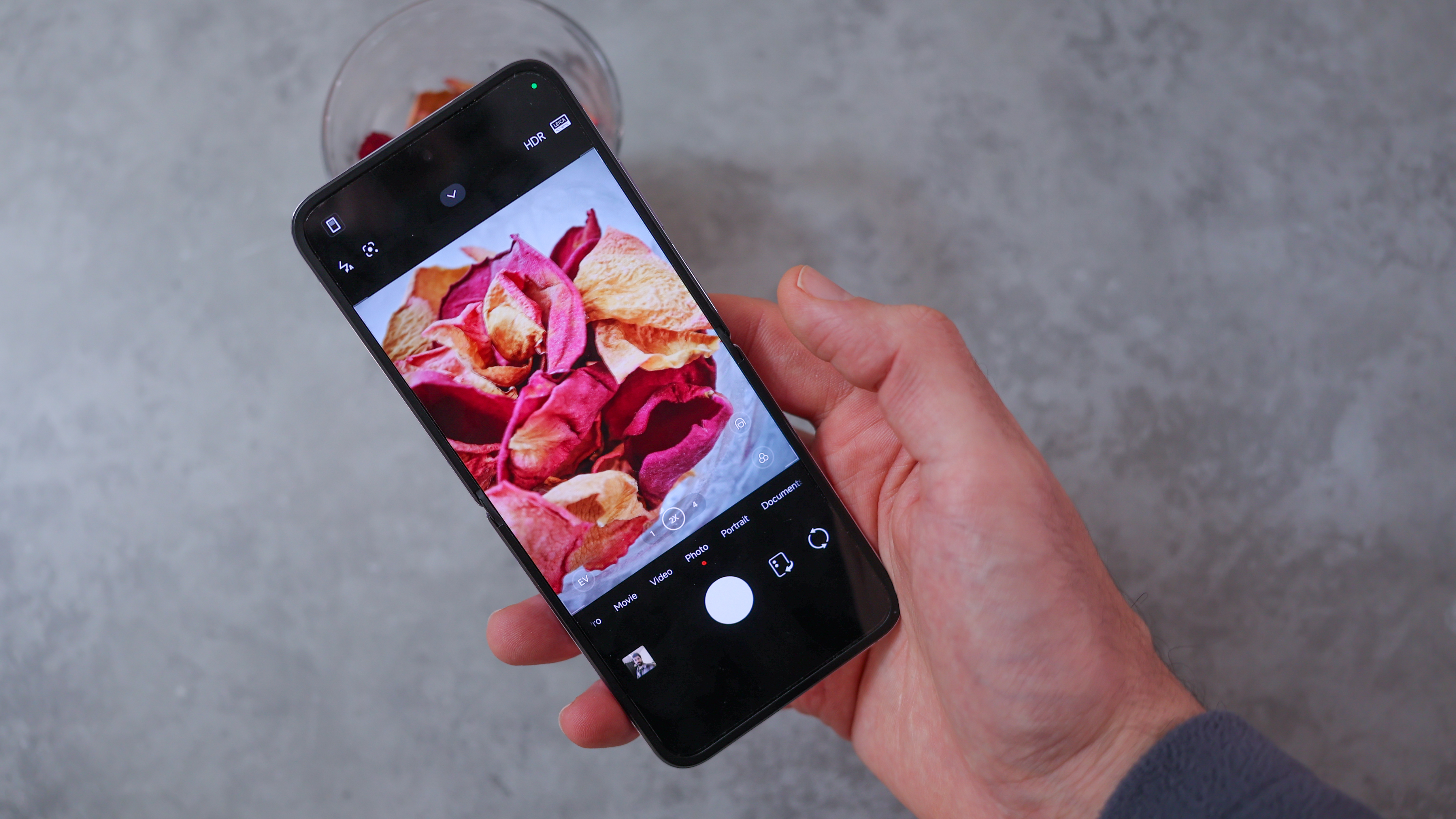
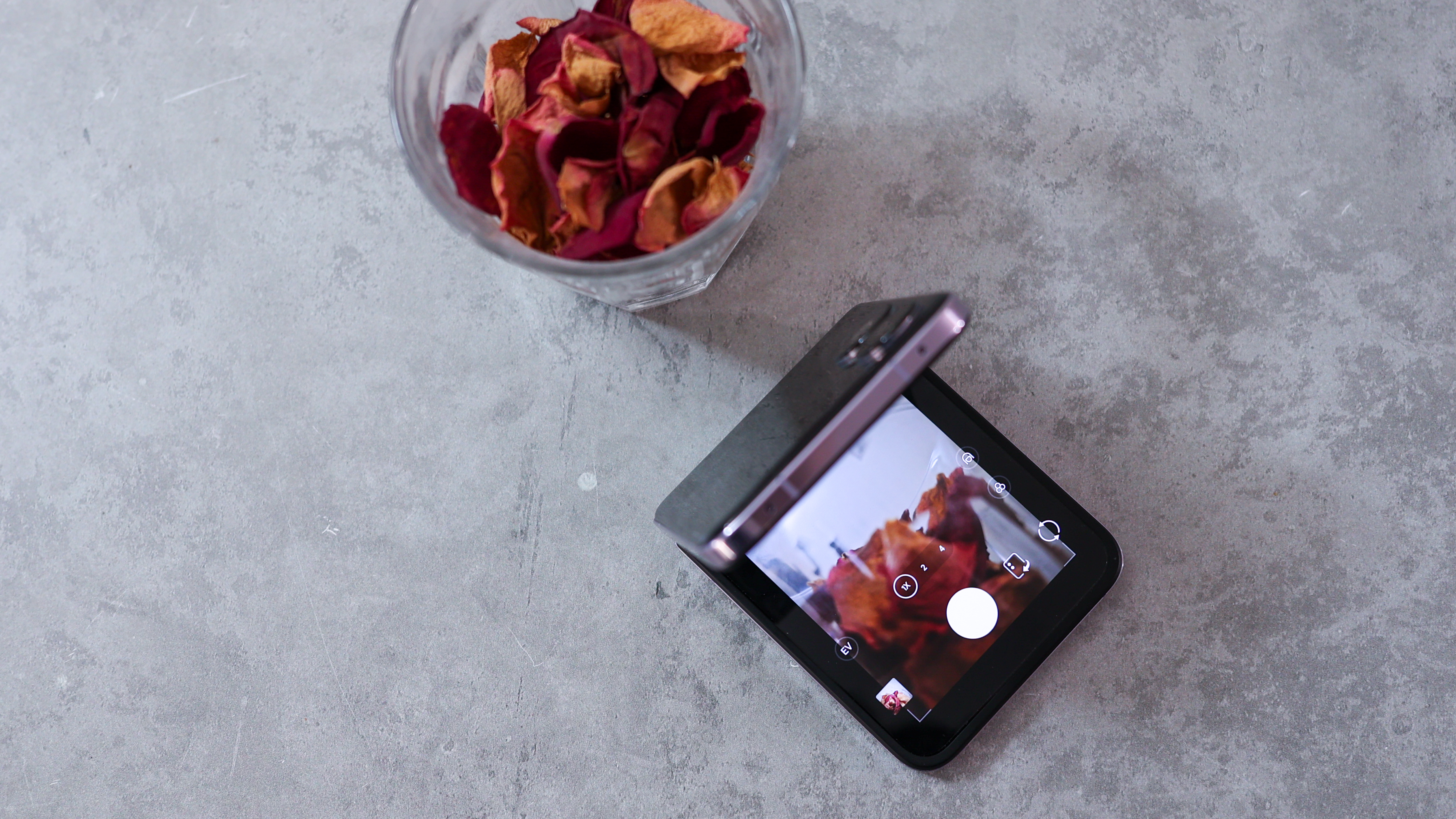
What sets Xiaomi's Leica camera phones apart from the competition, though, isn't camera hardware, but instead, the photo processing, which takes a more traditional approach to the finished picture than we're used to from smartphones.
Fire up the Xiaomi Mix Flip, and you're prompted to choose between either Leica Authentic or Leica Vibrant modes. By default, it activates in auto mode, though there's a comprehensive Pro mode with manual control over ISO, focus, shutter speed, exposure, and white balance. It can also shoot in both JPG and RAW across both rear cameras, and capture video at up to 4K resolution, 60fps in SDR, or 40fps in HDR.
As with most foldables, the Mix Flip also supports part-folded capture, and you can also use the cover screen for convenient selfies and vlogs. When you want to use the inner selfie camera, you'll be using a 32MP, f/2 setup with a 21mm equivalent focal length.
Xiaomi Mix Flip: camera review
The Xiaomi Mix Flip's camera is good for a flip phone, but out of the gate, it struggles to compete against other top-tier options in the £1,000/$1,000+ price bracket, so if image quality is your priority, you're still better off skipping flip phones.
When the phone first launched, it struggled with dynamic range, leaving bright spots overblown, and while this has been slightly improved, it's a characteristic of Leica's processing. Xiaomi's Leica-branded phones shirk the heavy HDR effect popularised by Pixels, instead opting for more contrast-heavy photos. As you can see in the samples below, the results are typically cinematic.
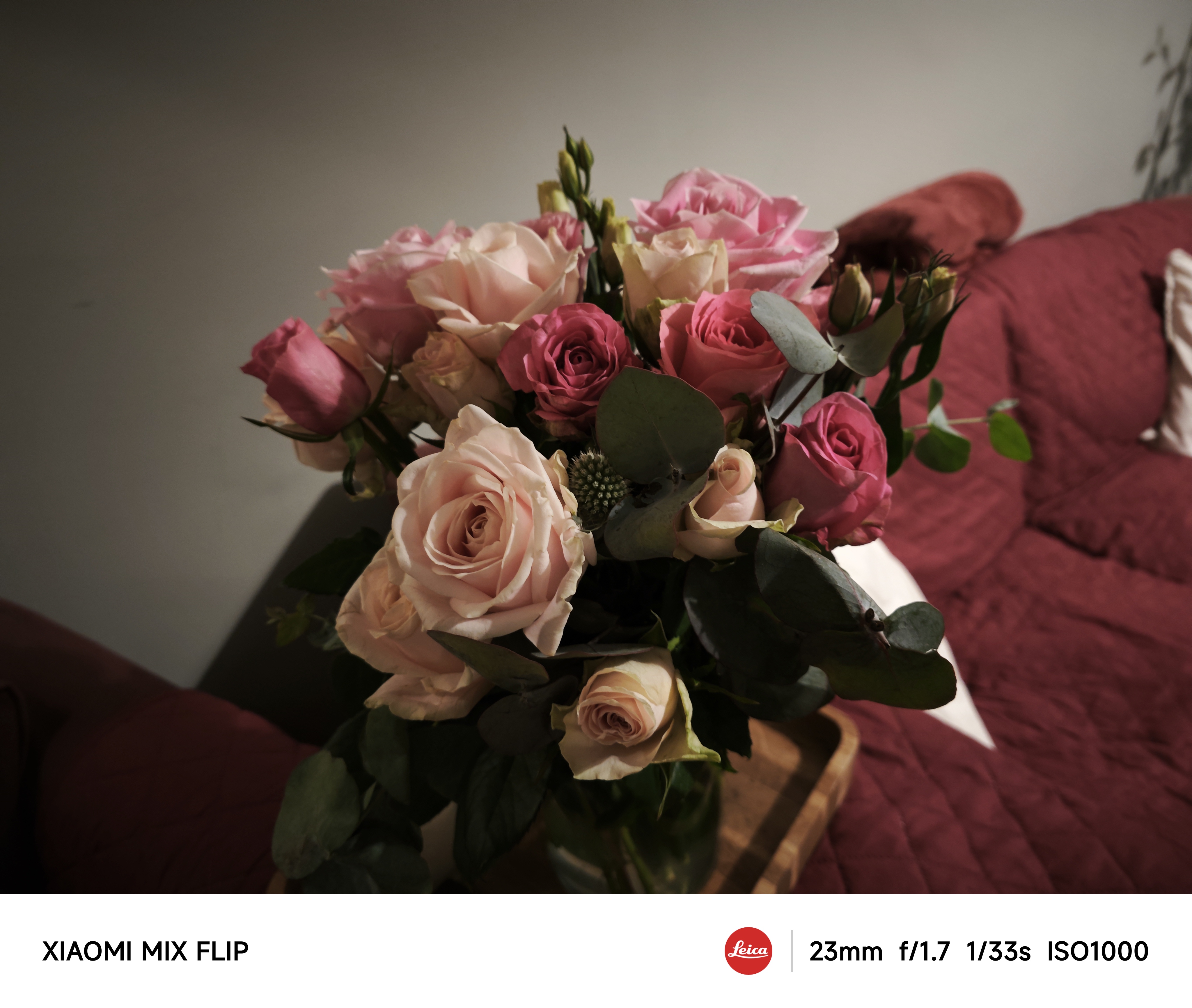
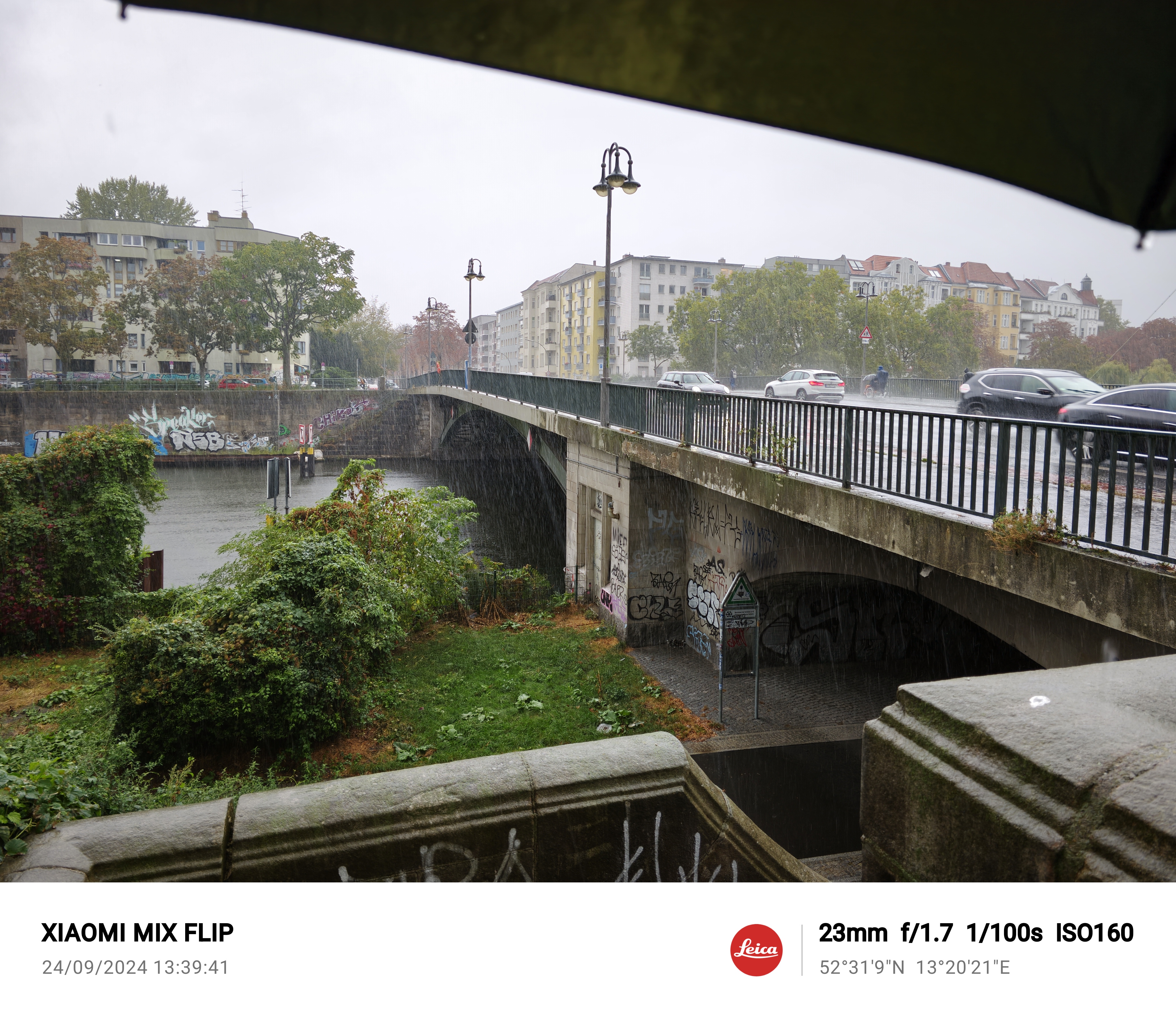
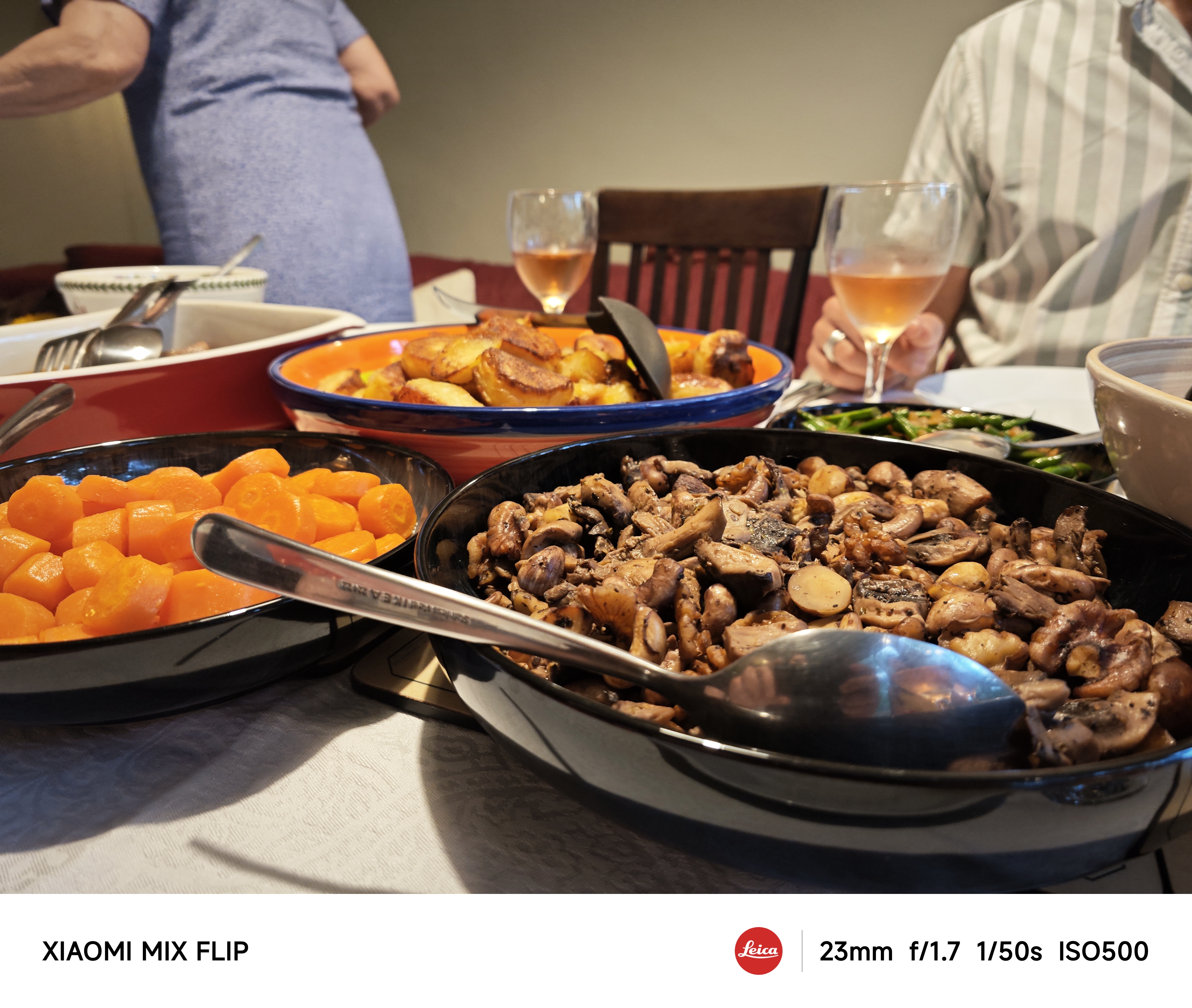
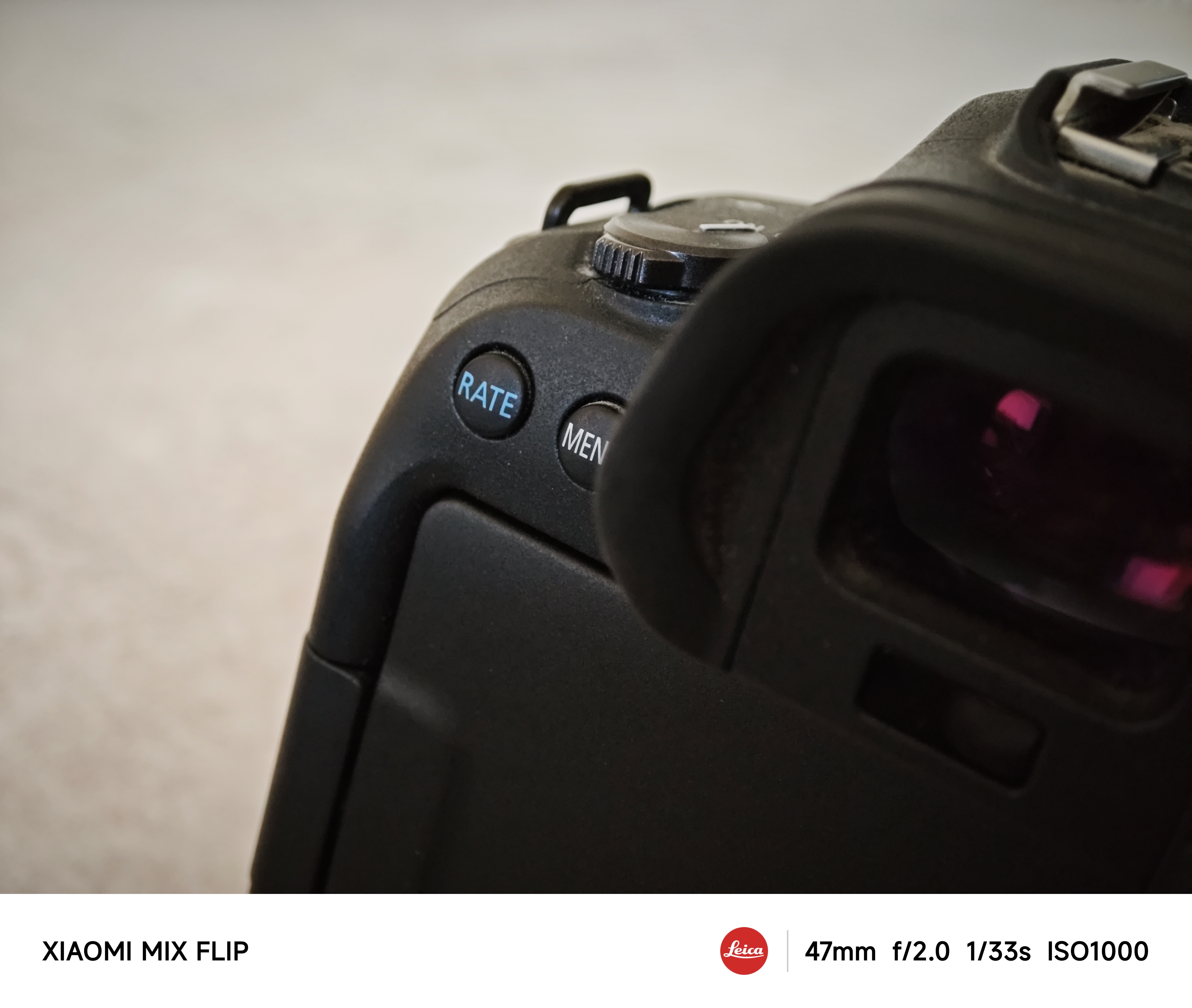
Detail across photos is good, with both the primary and telephoto cameras locking on as close as 9-10cm and producing pleasingly shallow depth. This makes the Mix Flip the best flip phone for macro photography, especially in brightly lit environments.
Indoor capture can be hit or miss. Moving subjects like pets or children often come out blurry when light isn't ample – typical of phones with smaller sensors – and Xiaomi's computational algorithm doesn't overcome this in automatic mode. Hold the phone steady or part-fold it, though, and you can get great-looking lowlight shots, but you'll need a stationary subject.
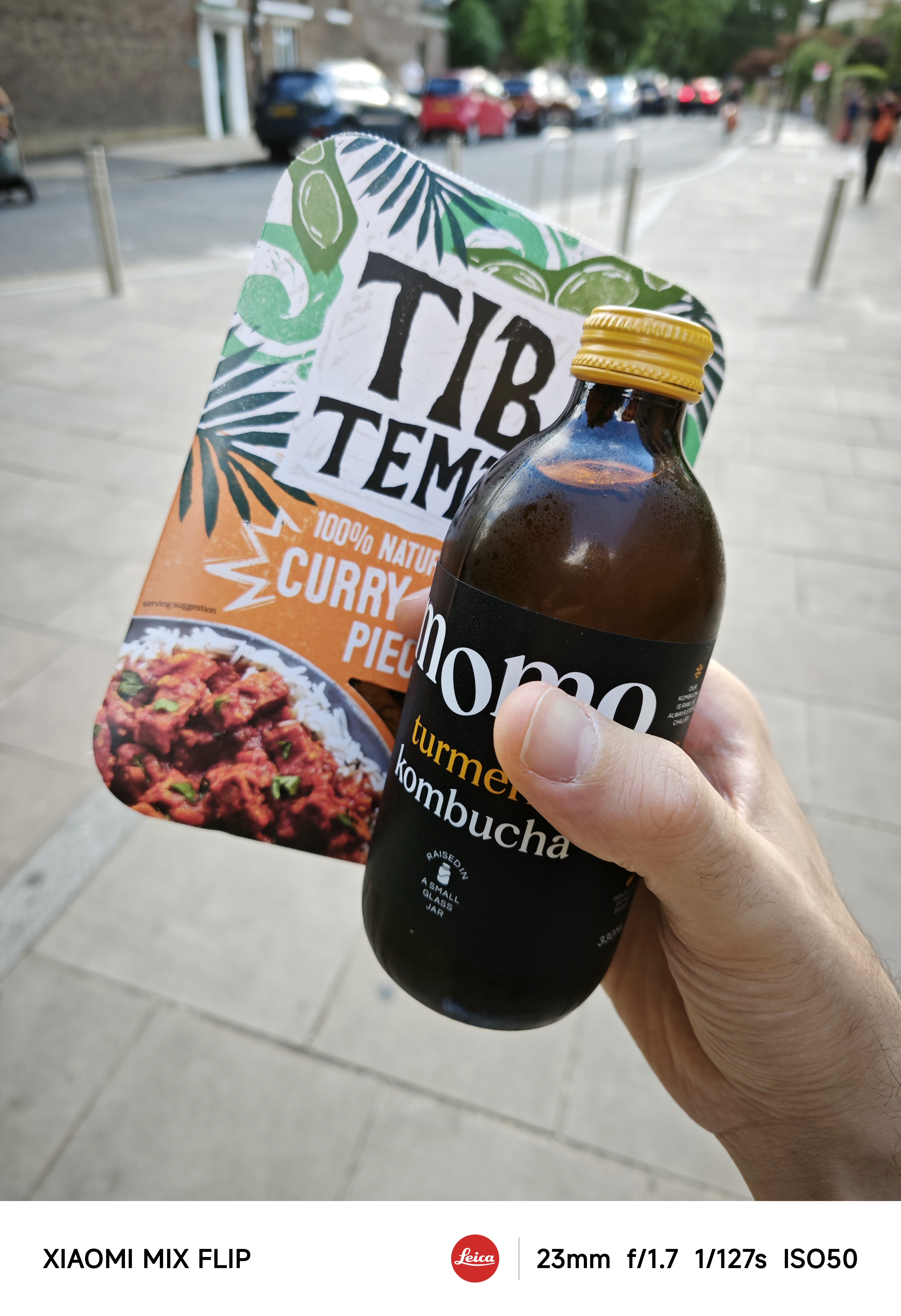
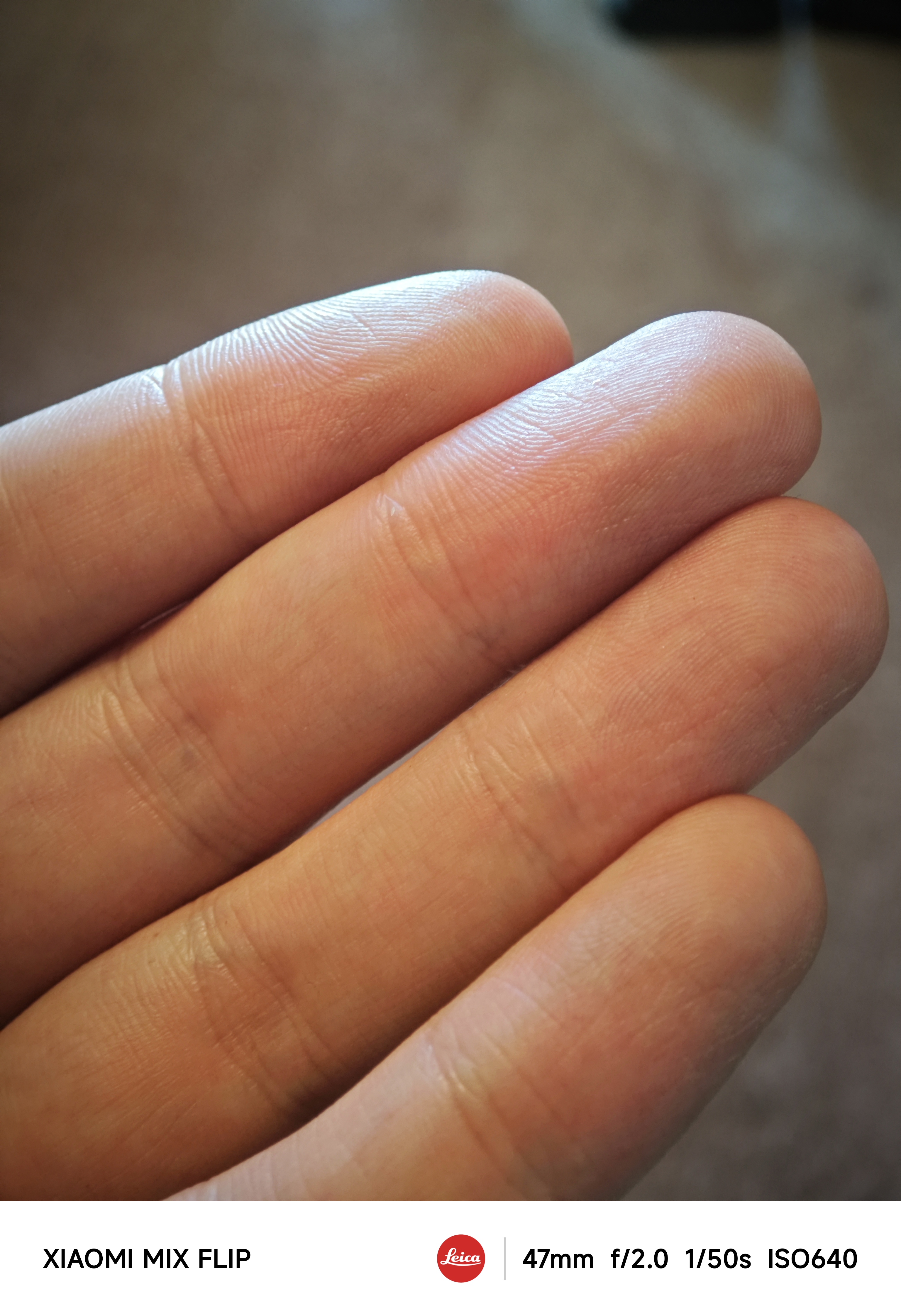
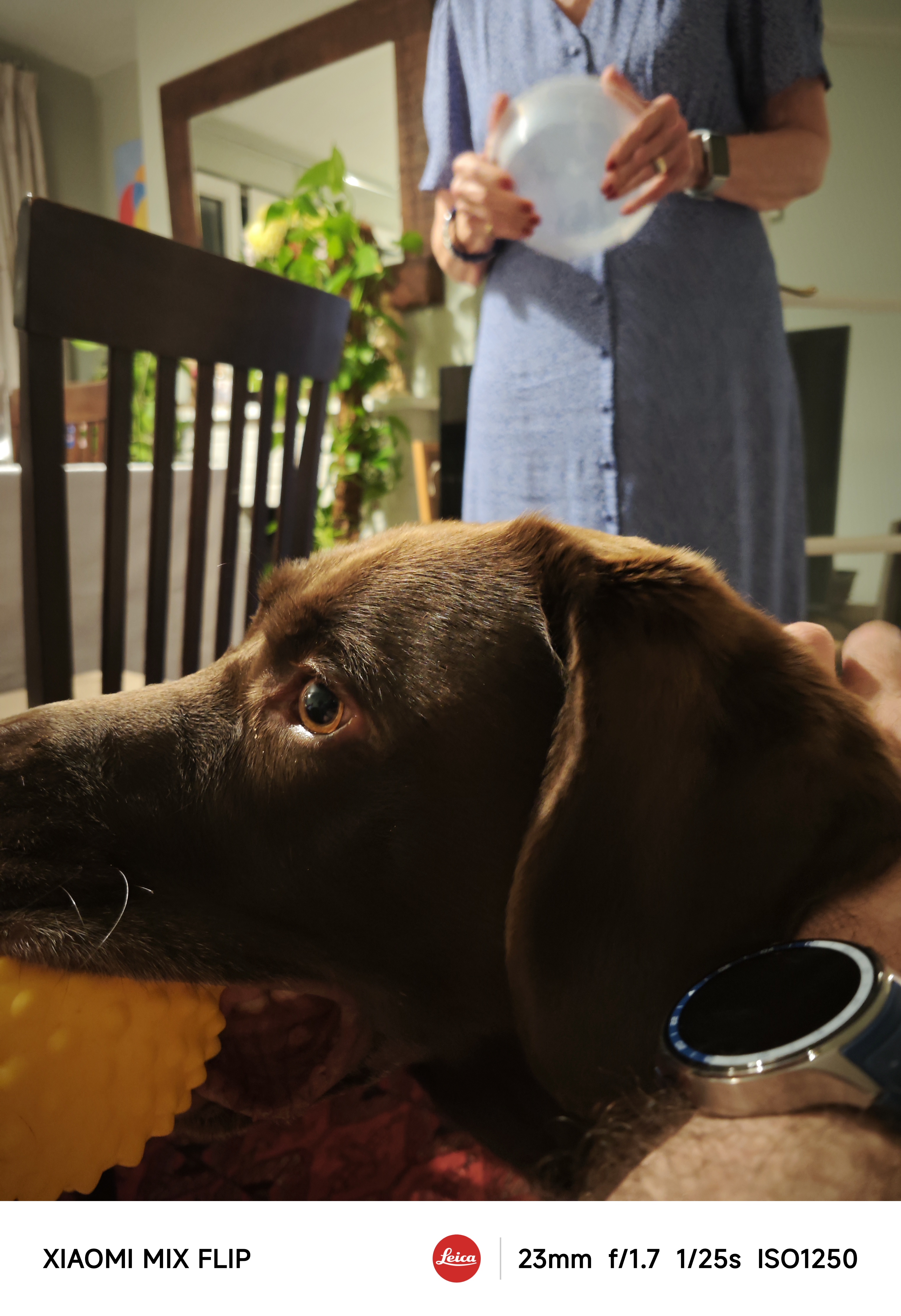
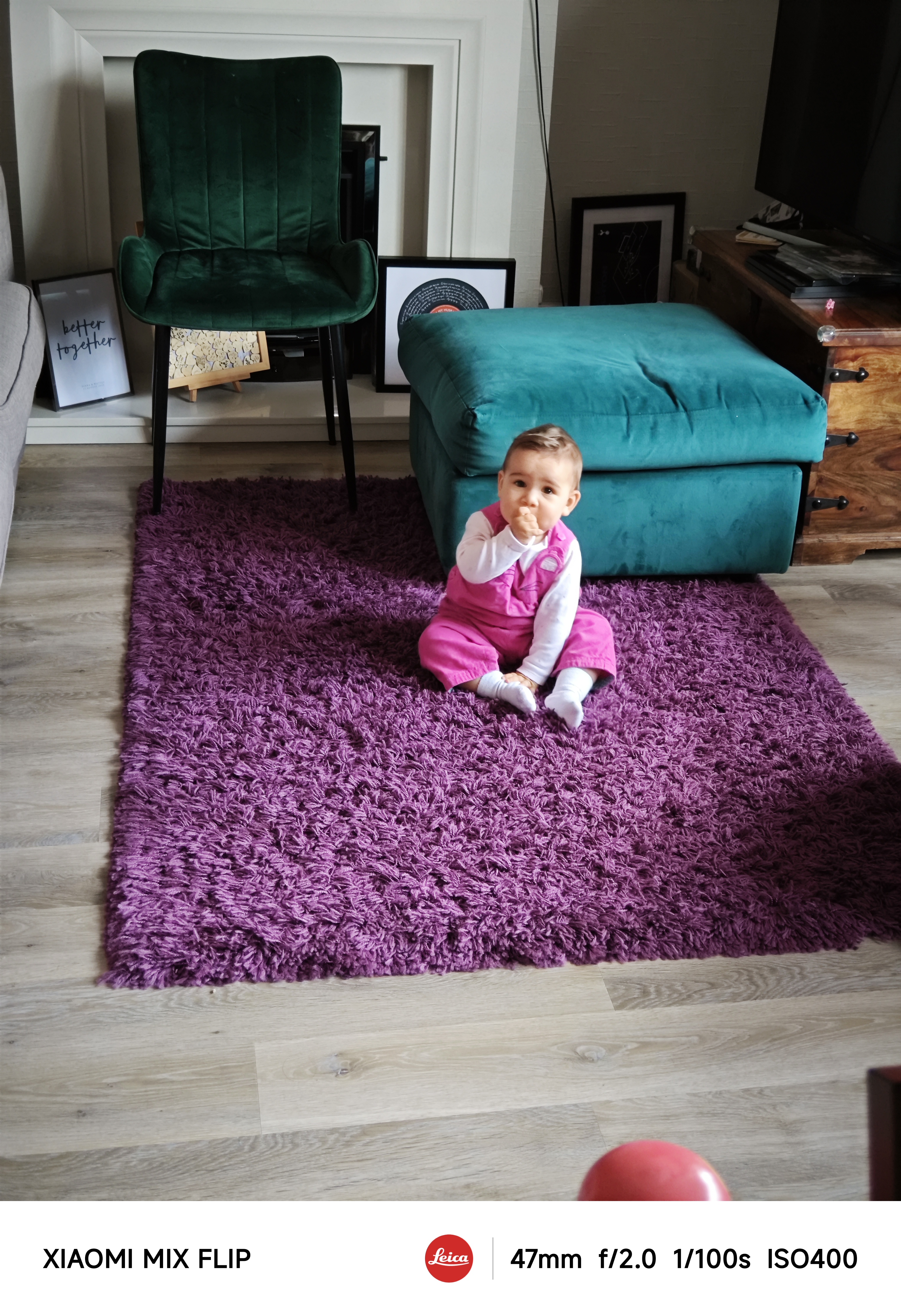
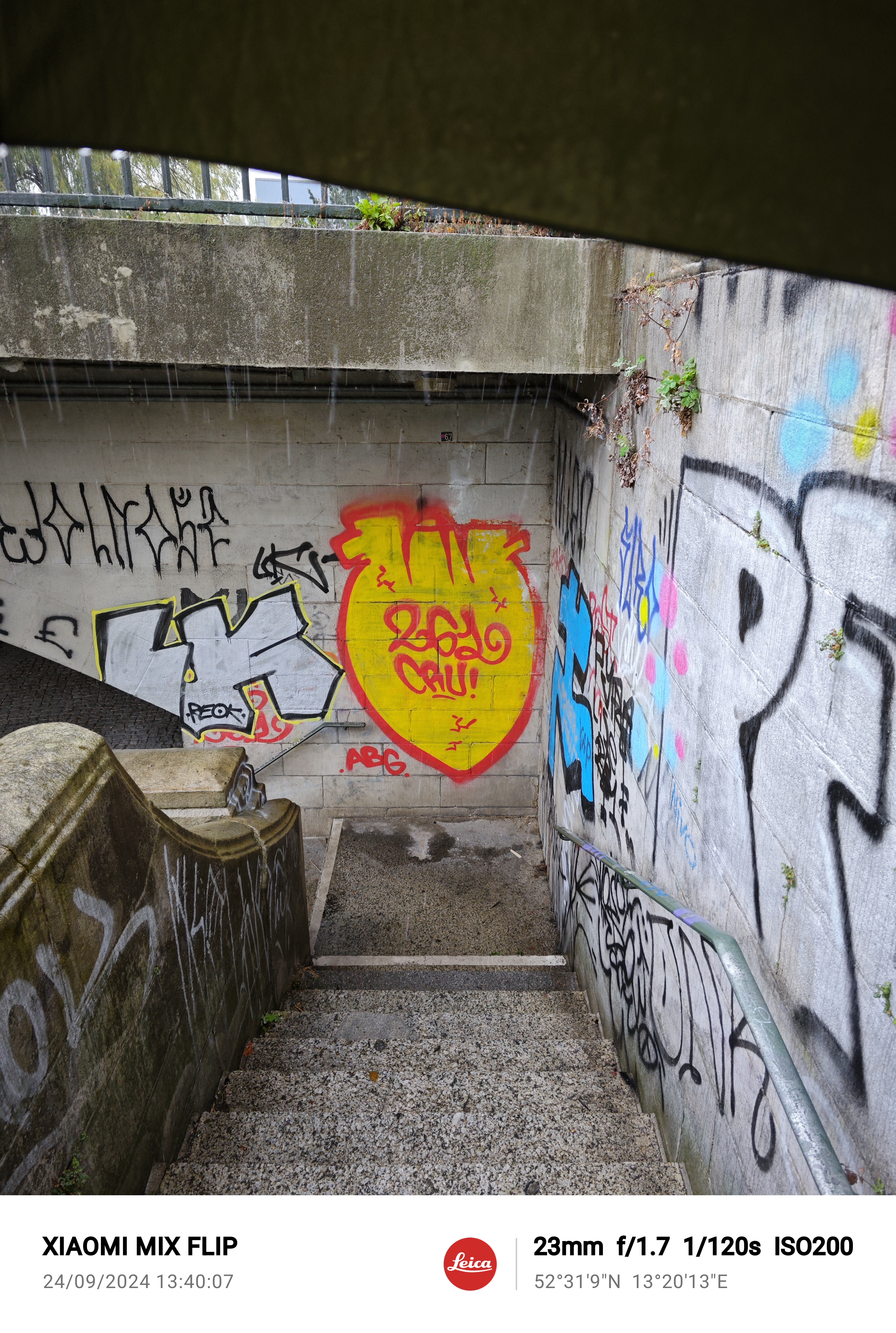
The Xiaomi Mix Flip's processing shines when there's a good amount of light without any bright spots. It creates photos with plenty of depth and character, focus is generally on-point, and depending on which mode you choose – Leica Authentic or Vibrant – colors are handled predictably.
We would have liked a middle ground between Authentic and Vibrant, as the prior can deaden saturation and result in a dull quality, while the latter tends to over-saturate. The Pro Mode, however, does a good job of combining respectable quality with manual control, though this limits the HDR effect even more.
Despite its optical zoom, the Xiaomi Mix Flip isn't actually an excellent zoomer owing to the lack of OIS on the tele module. It's competitive for a flip phone but often reverts to the primary camera when zooming in darker environments. The tele camera proved most useful for macro shots, outperforming the primary camera when it came to close-up detail.

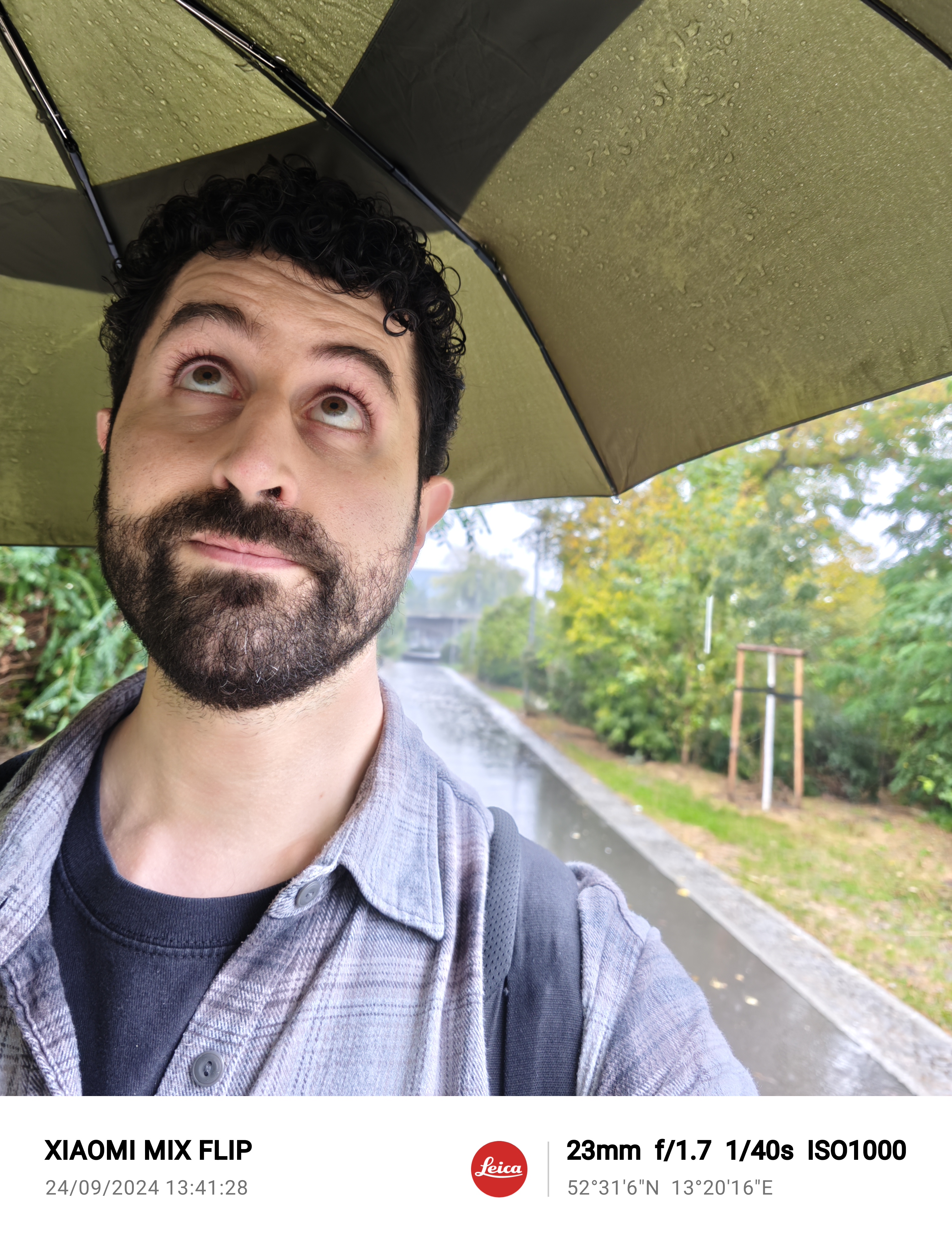
By its nature as a flip phone, the Xiaomi Mix Flip is a good selfie and vlogging tool. By using the main camera for snaps when closed, selfies are taken with the biggest sensor and widest aperture onboard, and the results impress. This is especially true when you play about with some of the filters for more filmic or monochrome looks.
Video from the Mix Flip looks respectable, though the lack of OIS on the tele camera means zooming when recording is out of bounds in all but the best light. Dynamic range can also struggle from the main camera when there are bright spots – even more so than with photos – with blown-out highlights bleeding into view. That said, for scenes that aren't so high in contrast, footage looks good.
Xiaomi Mix Flip: additional features
The Xiaomi Mix Flip is powered by a Qualcomm Snapdragon 8 Gen 3, which delivers similar performance to the Galaxy Z Flip 6, and a boost over the Motorola RAZR 50 Ultra.
Interestingly, the Mix Flip is one of the only phones we've tested that shuts down the benchmark app, 3D Mark, due to overheating. The phone didn't get particularly warm to the touch in the process, but it suggests Xiaomi is conservative with power management and throttles aggressively. Despite this, we played an hour of Wuthering Waves, a demanding game at high graphics settings with no issues or noticeable frame drops, so benchmarks aside, this phone is still a powerhouse in the flip category.
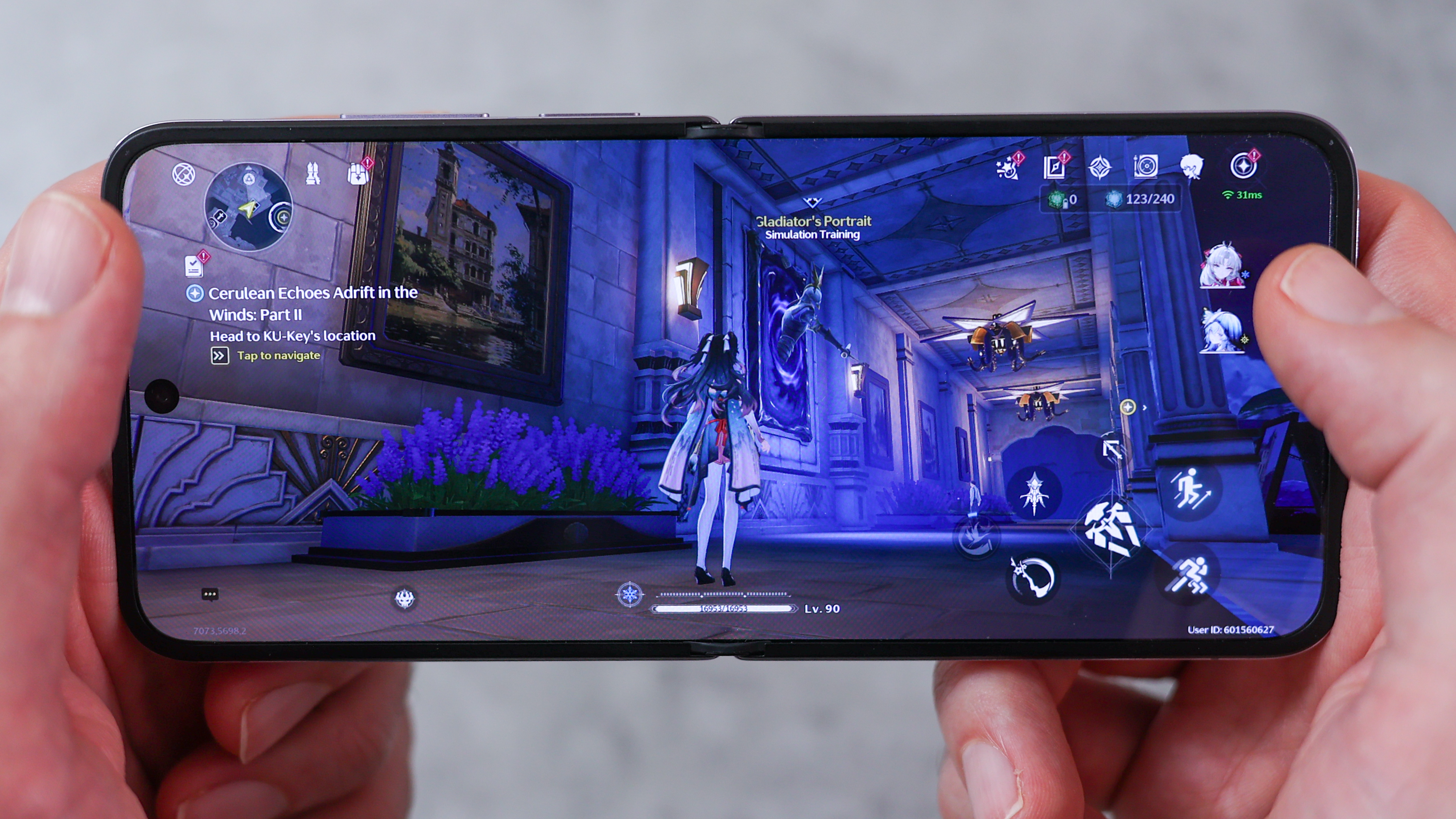
Xiaomi shows up Samsung by loading its Mix Flip up with 512GB storage as standard, double the Z Flip 6's starting capacity, and the phone also has 12GB RAM, which is what we'd expect at its price and positioning. All this means you can expect smooth day-to-day performance and plenty of room for your files, photos, and 4K video.
The Xiaomi Mix Flip was announced alongside the Xiaomi 14T Pro and a host of AI tools to its HyperOS interface. There are some handy highlights, with AI Eraser being more versatile than the competition's implementation, working exclusively on-device by default, but having a Pro cloud mode for more advanced object removal.
The ultra-popular voice recorder transcription feature that's been on Pixels for a few years is another new addition to Xiaomi's toolkit, and one-button summaries of recordings can be generated, too, as well as a summary of notes. There's apparently an interpreter and translation feature, but we couldn't figure out how to activate it, so the whole app suite definitely misses out on the clarity and polish of the Z Flip.
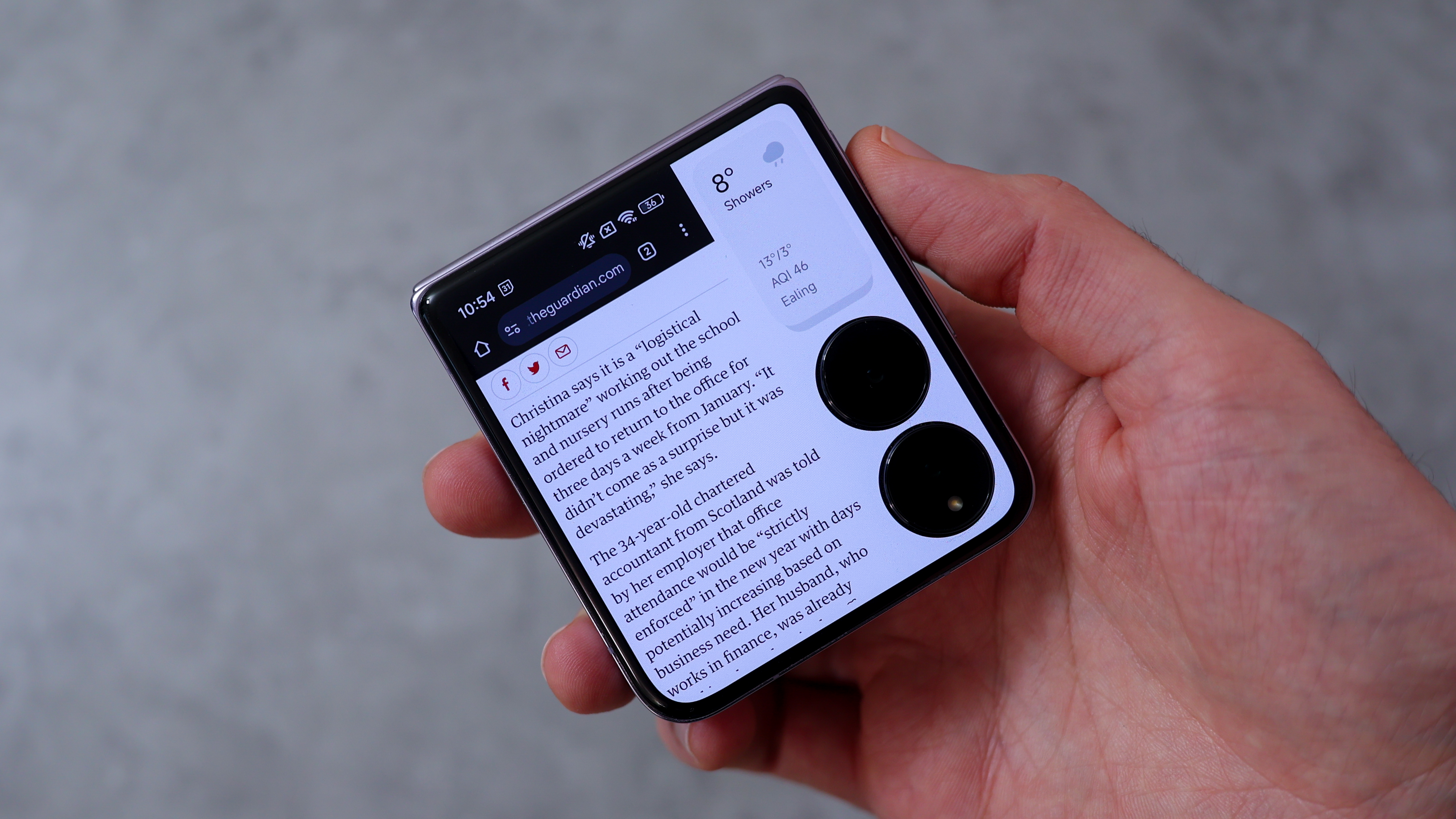
HyperOS lives atop Android 14, with the interface clearly borrowing aspects from both Google and Apple's mobile operating systems when it comes to utility. It's good to see much of the bloat and adverts found in lower-end Xiaomi devices like the 14T and Poco series missing in its more premium offerings, ensuring the Mix Flip feels like a flagship inside and out.
Arguably, the phone's biggest selling point is its 4,780mAh battery, which is a huge bump over the competition, making the Mix Flip the longest-lasting flagship-specced flip phone we've used. It comfortably lasted a full day with typical and even heavy use, while still needing a nightly charge.
With 67W fast charging, the case could be made that the Xiaomi Mix Flip's class-leading charging speeds lessen the need for wireless charging; however, at its price and position in 2024/25, we'd still expect to see both wired and wireless charging in any flagship product.
Xiaomi Mix Flip: Verdict
The Mix Flip is a strong first showing from Xiaomi. The first flip phone from the brand, the first Leica flip phone and the first Xiaomi foldable to launch overseas, it gets a lot right.
Fans of Leica's processing on Xiaomi phones will enjoy what the Mix Flip does with its modest camera hardware. The telephoto camera's macro performance is also great to see and handy, though we wish it zoomed further and had OIS to add real utility across lighting conditions.
A lack of IPX8 water resistance, wireless charging and the limited app support on the cover screen hold the Xiaomi Mix Flip back from being a clear winner in the flip phone camp, but it definitely does something different and does it well.
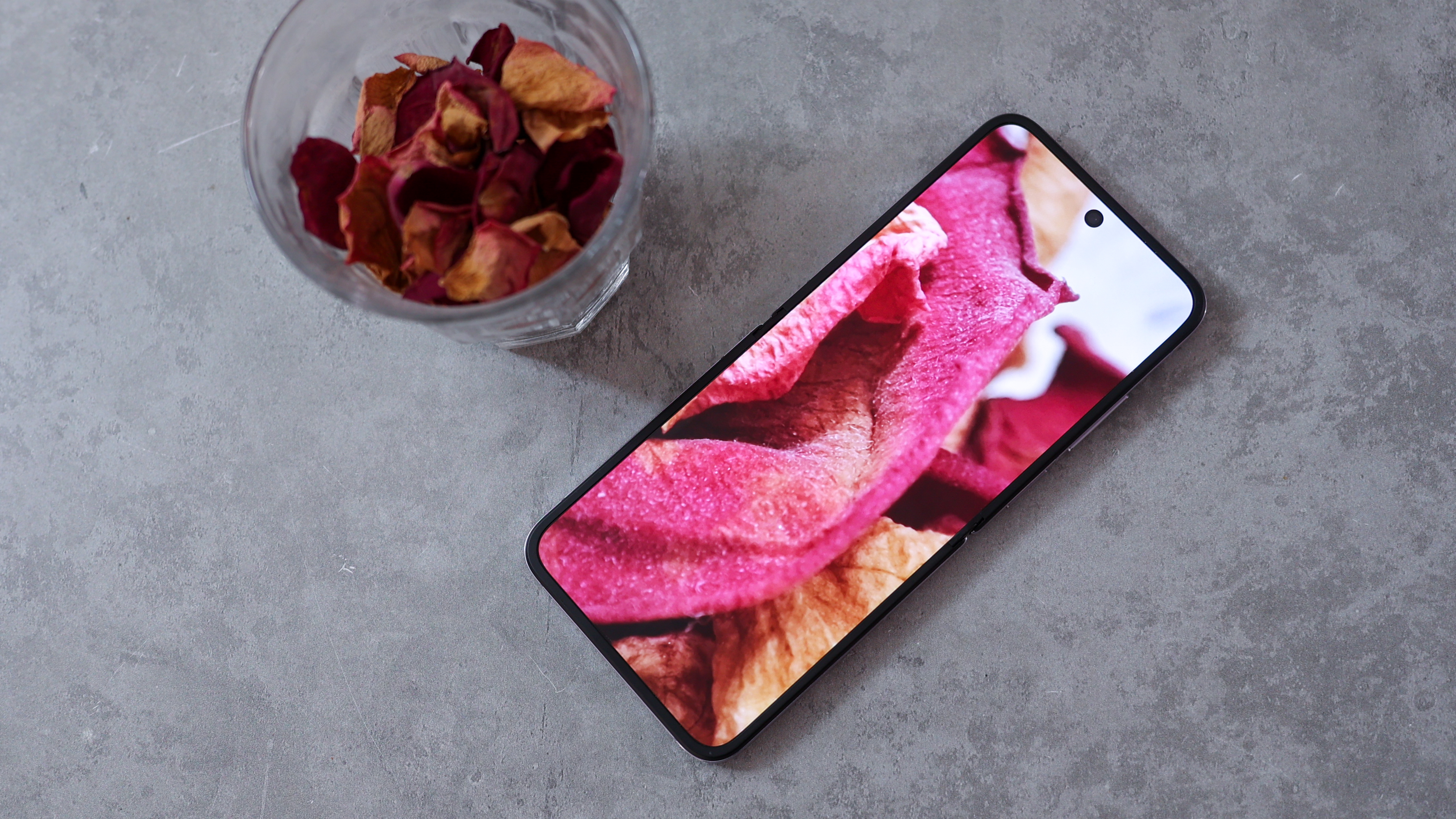
Thanks to impressive build quality, battery life, glorious displays, solid performance and a strong, albeit characteristic camera system, the Mix Flip is a joy to use despite the caveats.
The fact most apps we needed to work on the cover screen did – from WhatsApp to Google Maps, Chrome, Instagram and Spotify – also helped its case, and generally speaking, whether closed or open, we found the phone to be imperfect yet charming. A solid first-effort flip phone, and a promising peak into how Xiaomi might plan to tackle the fledgling smartphone category in future.
Want to know more about the Xiaomi Mix Flip's competition? These are the best flip and fold phones flexing their features right now, and if you aren't sold on the Flip, check out our guide to the best camera phones of 2025.
Basil Kronfli is a freelance technology journalist, consultant, and content creator. He trained in graphic design and started his career at Canon Europe before moving into journalism. Basil is also experienced in video production, independently running the YouTube channel TechEdit, and during his time at Future, he worked alongside the Digital Camera World team as a senior video producer.
